Grønsvik coastal fortress, Lurøy
If you want to see an unusual attraction and gain insights into World War II history, we recommend a visit to the old German coastal fortress at Grønsvik, which is now a museum. As you walk from the attractive parking lot and picnic area, you enter a dark chapter of European history.
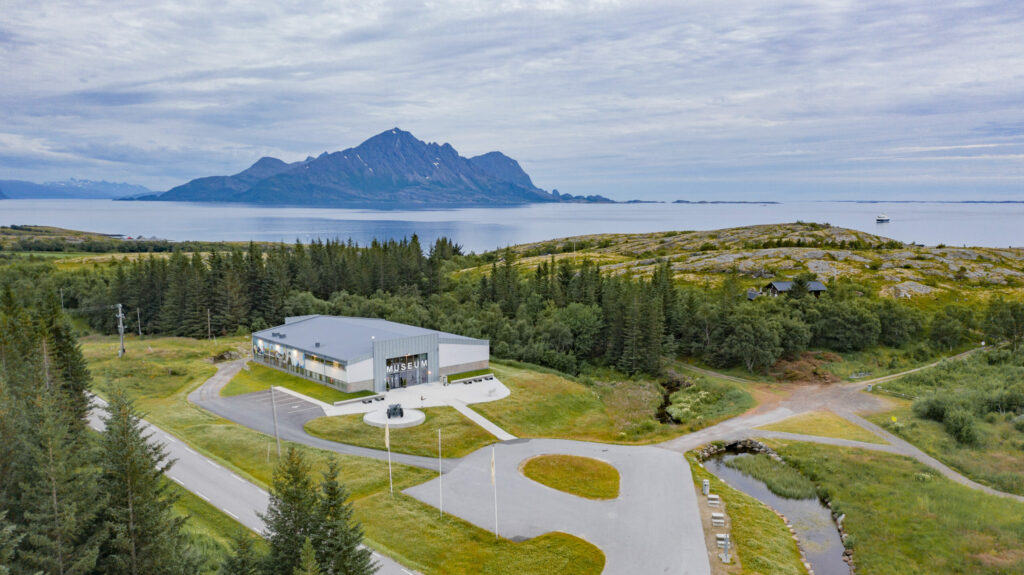 Ketil Born / Helgeland Museum
Ketil Born / Helgeland Museum
After Nazi Germany surrendered and ended its occupation of Norway, Grønsvik coastal fortress, like many others along the coast, was subjected to major damage. Today, Grønsvik has been partially restored and turned into a museum. Exhibitions cast light on the war in general, and especially on the role the coastal fortresses played during the German occupation.
Visitors can explore the foxholes, gun positions and the command bunker. These are open year round. The Grønsvik coastal fortress and museum are situated along the Norwegian Scenic Route Helgelandskysten (Fv17), just north of Stokkvågen.
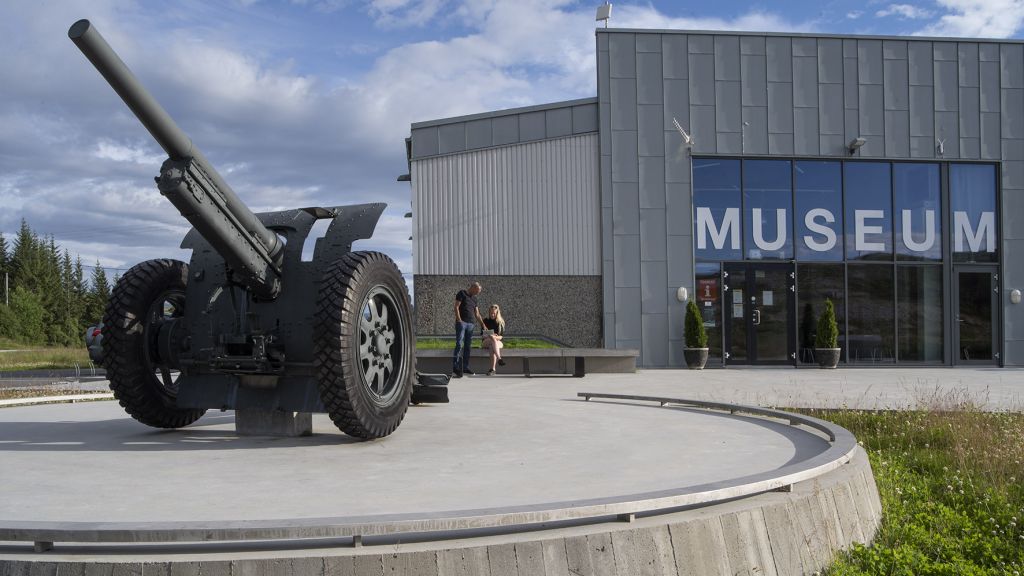 Ketil Born / Helgeland Museum
Ketil Born / Helgeland Museum
The history
During the war years 1940–45, the Germans established the Atlantic Wall, a slong eries of coastal fortresses that stretched from the Pyrenees in the south all the way to the Arctic Ocean in the far north. More than 350 coastal fortresses were built along the Norwegian coast, including the one at Grønsvik. The mission of this fortress was to control the entrance to the Ranfjord and the fjord called Sjona.
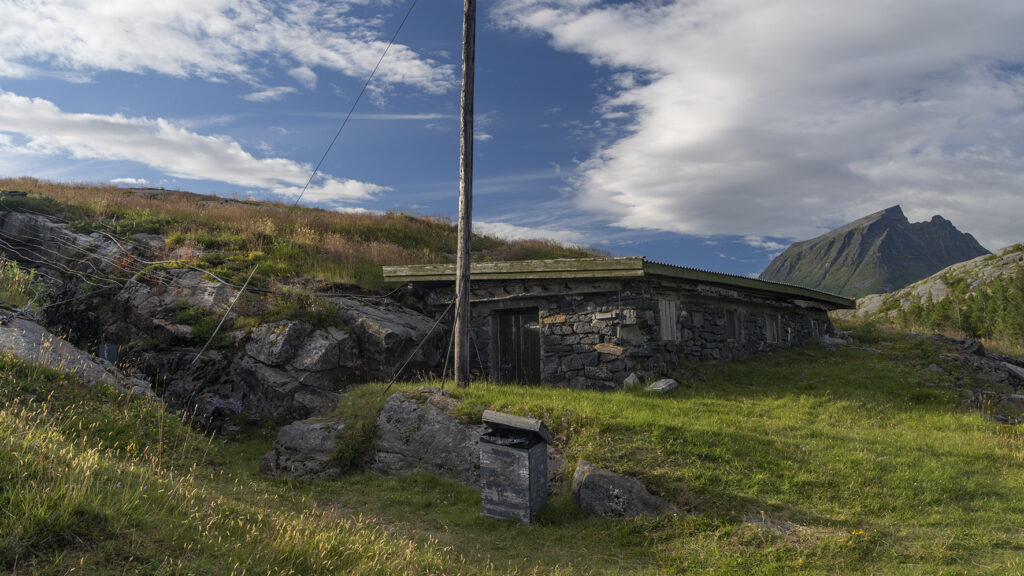 Ketil Born / Helgeland Museum
Ketil Born / Helgeland Museum
The Germans forced 77 Soviet and 65 Polish prisoners of war to build the fortress. An unknown number of Norwegian workers also participated, some voluntarily, others under duress. The Soviet prisoners of war were subjected to especially brutal treatment and compelled to do hard physical labour. Many of them suffered from malnutrition and disease. The local Norwegians felt great compassion for these ragged and hungry prisoners of war, and they defied the German ban and surreptitiously gave them food and clothing.
A simple burial ground was made for the seven Soviet prisoners who died during the construction. After the war, the skulls were dug up and moved to the war cemetery on Tjøtta. There is a memorial to them at the Grønsvik coastal fortress.
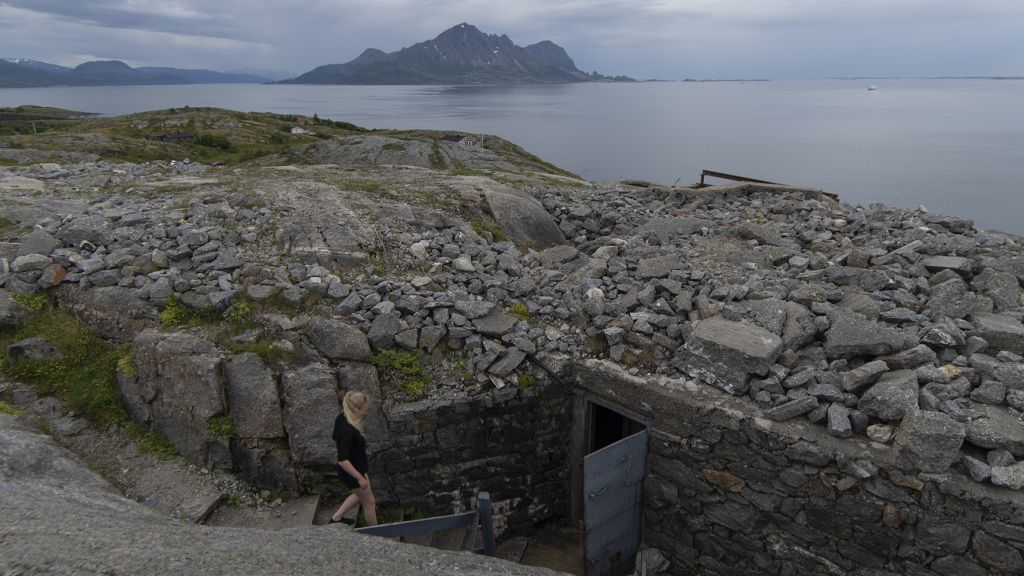 Ketil Born / Helgeland Museum
Ketil Born / Helgeland Museum
The fortress and the gun positions are strategically situated so as to have an optimal view of the shipping lane and the archipelago. Inside the mountain, the Germans blasted out rooms and passages to their gun positions, bunkers and foxholes, which were all well camouflaged. Today, the coastal fortress and the surrounding area are open to the public year round.
The Grønsvik coastal fortress is situated along route Fv17, just 2 km north of the Stokkvågen junction. There is a café on site.
Contact
Phone: +47 75 11 01 85 / 415 20 801
E-mail: luroy@helmus.no
Hjemmeside: helgelandmuseum.no/besokssted/gronsvik-kystfort/
Facebook: GronsvikKystfort
Instagram: @gronsvik_kystfort/
Get directions:
Open Google Maps
Open at events, on request and during the summer season.
The bunker facility at the coastal fort and the surrounding area is open for free movement all year round.
Grønsvik Coastal Fort is along the Coastal Route, west of Mo i Rana and Nesna, on the northern part of the Helgeland coast.
Find your way with Google Maps
Read more about the Coastal Route
Takk for at du hjelper oss med å ta vare på naturen og lokalsamfunnene på Helgeland.
Takk for at du:
- Praktiserer sporløs ferdsel, og tar med avfall og toalettpapir tilbake til nærmeste søppeldunk.
- Planlegger toalettbesøk, slik at du får gjort det du må der det ikke er til sjenanse for andre.
- Respekterer det lokale dyrelivet, holder hunden i bånd og holder god avstand til både ville og tamme dyr og fugler.
- Respekterer privat eiendom, og holder avstand til private hus og hytter.
- Viser godt båt-vett, holder god avstand til land, lav fart nært andre på vannet, inkludert dyr og fugler, og unngår unødig kjøring som skaper forstyrrende motorstøy.
- Respekterer ferdsels- og ilandstigningsforbudet i sjøfuglereservatene i hekketiden.
- Følger fjellvettreglene, og planlegger turer etter evne og erfaring.
- Leier en erfaren guide på turene der du selv ikke har kunnskapen eller erfaringen som trengs for en trygg tur.
Andre ting i nærheten

Brasserie 8622
On September 7, 2023, Brasserie 8622 opened its doors in newly renovated premises in the center of Mo i Rana. The menu is inspired by French cuisine, made with top-quality local ingredients.
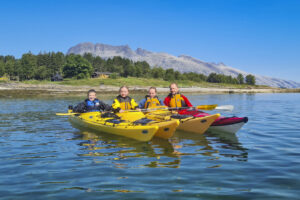
Kayaking Around Sandnessjøen and Herøy – Courses and Guided Tours
Explore stunning nature and vibrant coastal culture with Tømmervika Opplevelsessenter around Sandnessjøen, Tjøtta, and Offersøya. Join family-friendly day trips or exciting multi-day tours in Herøy and the Vega islands—and wrap it up with a fun game of football golf.
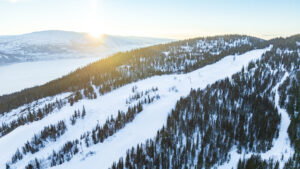
Skillevollen Alpine Center
Skillevollen Alpine Center is part of a larger winter activity center in Mo i Rana. Take the family skiing on the alpine slopes, the cross-country trail or on the ice rink in winter.
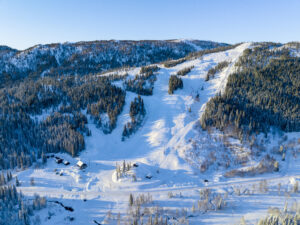
Kjemsåsen ski resort
With slopes catering to all levels, Kjemsåsen Alpine Center is the perfect destination for families looking for a fun and adventurous ski experience. Whether you’re a beginner, a seasoned skier, or a future alpinist, Kjemsåsen has something for everyone. Let the kids learn on the gentle children’s slope, while older beginners enjoy the rolling green run and the seasoned skiers test their skills on the challenging red and black run.

Hunting the Northern Lights at Støtt
Do you yearn for a truly magical winter adventure, and a respite from the hustle and bustle of everyday life? Between September and May, Støtt invites you to see the amazing celestial display of the Northern Lights! In addition, you will surely appreciate the subtle winter colours of our beautiful island realm.

A weekend of high adventure on the lofty peaks!
The picturesque Meløy Alps offers some of the wildest off-piste skiing in Northern Norway!
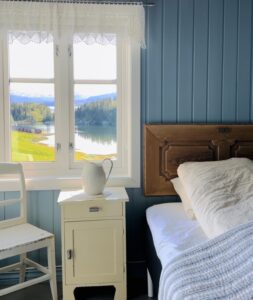
I Ro og Mak at Straumen Farm
Heartwarming stay and accommodation in the cozy Grandma’s Cabin. Find peace close to nature and the simple life in the countryside.
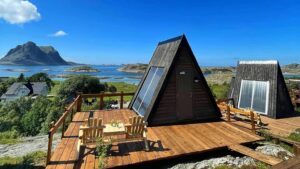
Base Camp Vega – kayaking, climbing and accommodation
At Base Camp Vega you can stay in mini-cabins whose unique design is inspired by the little huts the islanders build for the thousands of eider ducks that nest in the Vega archipelago every year. We also offer good spots where you can pitch your tent. Base Camp Vega is situated right by the Vega Stairs and the Ravnfloget Via Ferrata, and the sheltered waters nearby are perfect for kayaking.
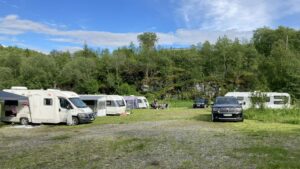
Haugen Camping – reasonable holiday accommodation on the coast
Haugen Camping is a camping site in peaceful surroundings in an area that has a colourful cultural history.

A glacier trek on Svartisen
Join us for an exotic adventure: a guided glacier trek on Engabreen. The experienced guides from Meløy Adventure will ensure that this is a safe and unforgettable adventure.
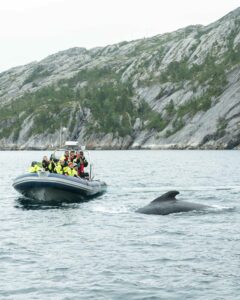
RIB sea rafting trips with Meløy Adventure
You are invited to join Meløy Adventure on a RIB sea-rafting adventure to the island of Rødøya and Rødøyløva (443 m). Other great options include a sea-rafting safari to explore the scenic Nordfjord, the spectacular island of Træna, or a visit to the remote island of Myken with a tour of its whisky distillery. These excursions start from Ørnes in Meløy municipality – but for your convenience you can request to be picked up elsewhere en route.
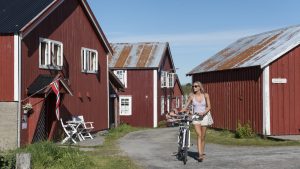
Bike rental in Brønnøysund
Situated in the centre of Brønnøysund, the Tourist Information office offers bicycle rental, as well as all the equipment you need for short bike rides or long cycling adventures.
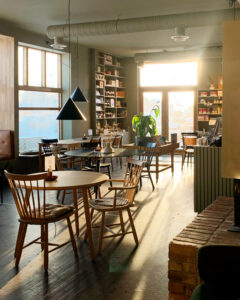
Skolo – an architectural gem in Herøy
The beautiful renovation of Seløy’s old school has been described in an article in “The Norwegian Review of Architecture”. Today, travellers can find accommodation here, drink quality coffee, eat pizza, browse books and buy artworks in the shop – and enjoy the panoramic view of The Seven Sisters mountains
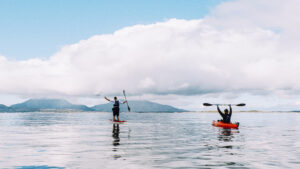
Kayaking the waters around Ylvingen
Based on the island of Ylvingen, Himmelblå Brygge offers introductory and more advanced kayaking courses, kayak rentals, and guided kayaking trips on the nearby waters. Their beautiful island is situated just south of Vega.
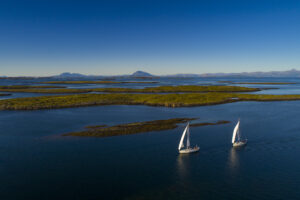
Sailing trips to Vega, Lånan and Torghatten
You are invited on an unforgettable sailing trip to the UNESCO World Heritage Area of the islands of Vega and the eider duck nesting site, Lånan, that for many generations has been protected by the islanders. Or choose a voyage to the legendary mountain with a hole through it, Torghatten.

Nordland National Park Centre – fine art and natural history
There is much to learn about the amazing wilderness and national parks of Nordland County – and the exhibitions at the Nordland National Park Centre aim to inspire this and much more. The centre offers something for the whole family, with exciting activities for young and old, such as walking the trails in the beautiful surroundings.
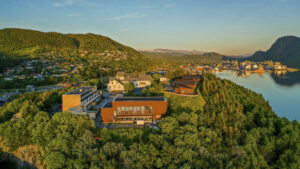
Toppen Panorama Mosjøen – in tranquil surroundings
Toppen Panorama, a hotel in Mosjøen that is open during the summer, offers a panoramic view of both this coastal town and the nearby fjord. Guests here enjoy tranquillity and scenic surroundings, and yet are only a few minutes’ drive away from the centre of Mosjøen
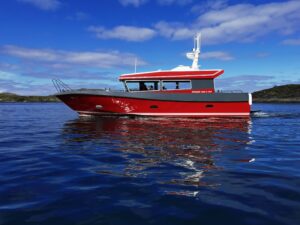
Tailored boat trips with Sea Adventure Helgeland
How would you like a cruise along the Helgeland coast, designed to show you and your friends the very best the scenic region has to offer? Or how about a shuttle boat that quickly takes you where you want, exactly when you want? Sea Adventure Helgeland offers you boat trips tailored to your needs and wishes.
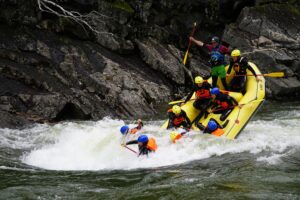
An exciting half-day rafting adventure at Trofors with RiverNorth
RiverNorth’s most popular excursion is the Half-Day Rafting Adventure. You get to challenge big waves – and see if you’re brave enough to dive from a cliff!
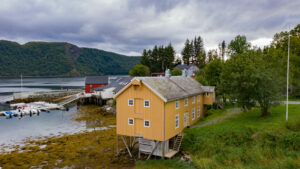
Bergh-brygga and Gammelskolen in Leirfjord
Leirfjord Museum is located in the old Bergh-brygga at Leland. Also, make sure to visit the beautiful Gammelskolen, which was in operation until the mid-1950s. Welcome to a journey through time!
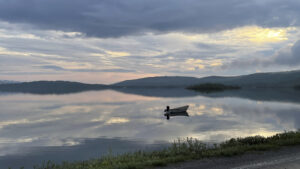
Rauvassgården mountain farm in scenic surroundings
The historic Rauvassgården is a gem in the mountains outside Mo i Rana, perfect for larger groups on a trip together, or smaller groups looking for ample space.
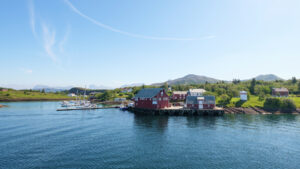
Selsøyvik Trading Post in Rødøy
Selsøyvik Trading Post is one of Helgeland’s oldest and most esteemed accommodation options. The island of Selsøyvik is beautifully situated along the shipping lane, surrounded by Rødøyløva, Hestmannen, and Svartisen. Here you will find accommodation, a large and beautiful guest harbor, a general store, and a café.
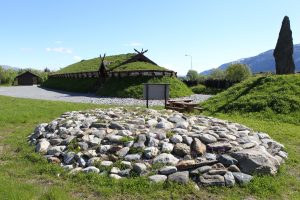
Visit the recreated Viking chiefdom seat in Sandnessjøen
You are invited to an authentic Viking experience! Bring your family or friends and see the clothes and customs, partake in activities, and enjoy a Viking banquet.
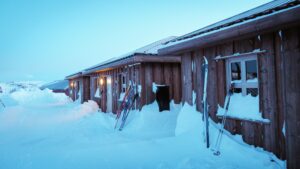
Korgfjellet Lodge
Come and stay right in the heart of a beautiful mountain area, in the heart of Helgeland. From Korgfjellet Lodge, you have a beautiful hiking area right outside your cabin door, both in summer and winter. Perfect for those who want to go hiking or skiing, fish in mountain lakes, hunt, or pick berries.
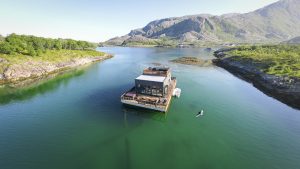
Helgeland Havhus – exclusive sea house
Many places can offer you seaside accommodation – Helgeland Havhus actually offers you a holiday home right on the sea! Treat yourself to a very special holiday, where the salty fragrance of the sea, and the sound of waves and seabirds are natural ingredients.
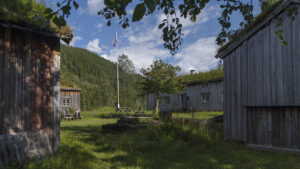
Velfjord Museum
The Brønnøy and Velfjord districts share an ancient history of fishing and farming, as well as a proud indigenous Sámi culture. You can gain many cultural insights by visiting the exhibitions in the old supermarket at Minnetun, as well as in the goahti (reconstructed turf hut) near here.
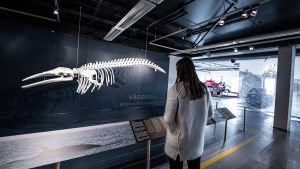
Rana Museum, Stenneset open-air Museum and Bredek Mountain Farm
Rana municipality has a fascinating and varied history, which the exhibitions at MOment, the new museum in Mo i Rana’s town centre, reveals in the form of a multi-sensory experience.In addition, at Stenneset’s open-air museum, you can stroll amongst 20 historic buildings, while the mountain farm at Brenek is a popular hiking destination.

Fiskebruket Restaurant – A dining adventure at Myken
At the far edge of the ocean, on the island of Myken, you’ll find Fiskebruket — a restaurant where dinner is built around ingredients from the sea, local wildlife, and nearby farms. Chefs Stian Floer and Tuva Sætnøe are ready to serve you a memorable meal inspired by their surroundings.
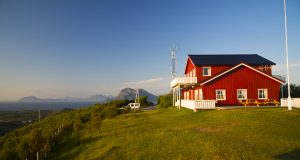
Dønnesfjellstua – Dining on a mountain top overlooking the Helgeland coast!
You are invited to enjoy an incredible 360-degree panorama, while dining on dishes made with locally-produced ingredients. Dønnesfjellet is only 128 metres high, but the view is magnificent.

Winter dream at Støtt
Do you dream of going from the hustle of the big city to “winter world” where the polar lights and the northern lights create magic? Visit the island Støtt and be close to nature, culture and history.
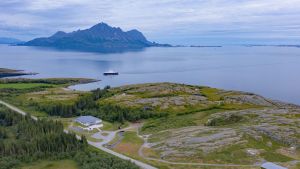
Grønsvik coastal fortress, Lurøy
If you want to see an unusual attraction and gain insights into World War II history, we recommend a visit to the old German coastal fortress at Grønsvik, which is now a museum. As you walk from the attractive parking lot and picnic area, you enter a dark chapter of European history.
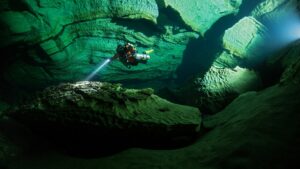
Plura Valley in Rana – A divers paradise!
Many experienced divers consider Plura Valley to offer world-class diving. Their facility offers everything you need for a perfect diving holiday. Moreover, they are situated right by the entrance of the underwater cave, Pluragrotta.
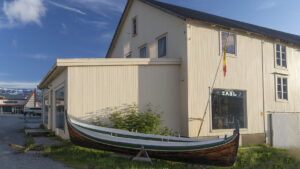
The Zahl building and the old sexton´s residence in Nesna
The main facility of the Nesna Museum is the building that once housed the business of the local Zahl family. This large and stately commercial building, which dates from 1907 and has Swiss-style decorations, has been expanded both in width and towards the rear. Nesna is amongst other things known for “Nesnalobben”, and an exhibition in the museum is dedicated to this footwear.
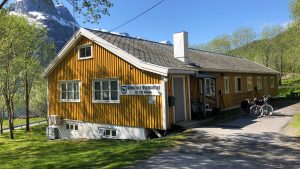
Accommodation at Glomfjord Overnatting
Meløy is a beautiful area for a wide range of holiday activities, year round. With a comfortable base at Glomfjord Overnatting, you have easy access to adventures on the sea and in the mountains.

Vitensenter Nordland – A science center for the whole family
At Mo i Rana’s science centre, Vitensenter Nordland, you can experiment, explore, and learn about the natural world, technology and mathematics. The interactive exhibition encourages you to touch and be active, not just to see. And the centre offers activities for the whole family.
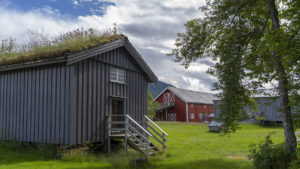
Hemnes open-air museum
Hemnes Bygdetun consists of a beautifully situated farm that can be just glimpsed from highway E6. The farm has a 500 year history, so its buildings and collections offer many insights into how our ancestors, both rich and poor, lived.
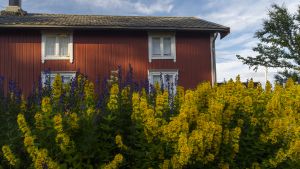
Træna museum
Træna Museum documents the this archipelago’s history going back to the Stone Age. Some of the archaeological discoveries displayed date back at least 9000 years. For this reason, Træna can rightfully call itself “the oldest fishing community in Norway”.
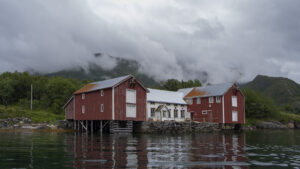
Falch Old Trading Post, Rødøy
Falch Old Trading is beautifully situated on the Tjongsfjord, and it’s just a short detour from the Coastal Highway, Fv17. This trading post has provided many functions through the years: a fish plant, cod liver oil production, fishnet production, country store, doctor’s offices and pharmacy.
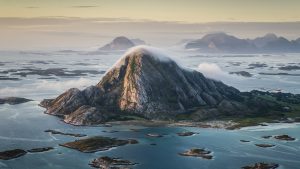
Bolga Brygge – Sleep to the soothing sound of waves
Bolga Brygge offers comfortable accommodation and good dining. Guest can enjoy fishing, kayaking the sheltered waters nearby, and hiking up a mountain that offers an amazing panorama of a large section of Helgeland.
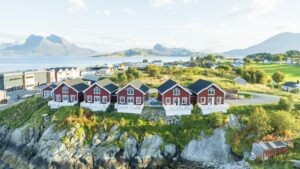
Kvarøy Sjøhus – A holiday stay in rorbu cabin
When you choose a holiday stay in a modern rorbu cabin at Kvarøy Sjøhus, you have the most beautiful destination on the Helgeland coast within easy reach. A boat or kayak opens up wonderful opportunities for adventure.

Nordland Theatre – Magical Moments
Nordland Theatre offers magical moments that may leave a lifelong impression. The theatre is situated right in the centre of Mo i Rana. This is regularly the venue for new and exciting performances, with the Winter Light Festival (Vinterlysfestivalen); the highlight of the year.

Corner Hotel
Corner Hotel – Hotel in the center of Brønnøysund, a coastal town in the middle of Norway! Corner Hotel offers affordable accommodation in close proximity to Norway’s perhaps most beautiful coastal stretch. Vega world herritage area is only a 25 minute boat ride away. The motel is perfect for those who want adventure and activity when visiting Helgeland.
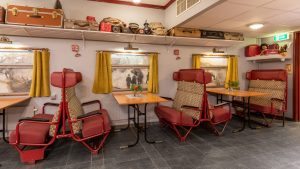
Sure Hotel by Best Western Ole Tobias
Sure Hotel by Best Western Ole Tobias offers accommodation in the town centre of Mo i Rana. The hotel is decorated with details from Norway’s railway history. Breakfast is served in “Spisevogna” (the Dining Car).
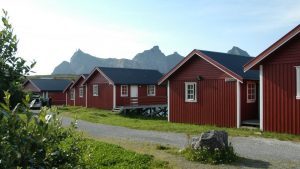
Træna Rorbuferie
The Træna archipelago is surrounded by the open sea. Træna Rorbuferie is situated on Husøya, the most populated of these islands. Here, amidst magnificent scenic surroundings, you have a golden opportunity to experience the thriving coastal culture of a vibrant island community.
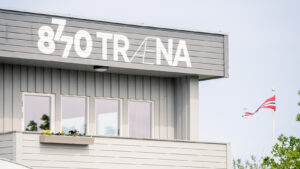
8770 Træna
If you visit Husøya, the main island in the Træna archipelago, consider staying at the cosy little hotel called 8770 Træna. Træna is a vibrant community, and here you will find good dining as well as strikingly beautiful scenery.
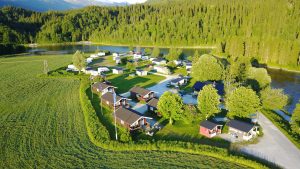
Korgen Camping – An idyll by the Røssåga River
Korgen Camping is idyllically situated on the river Røssåga, which since time immemorial has provided excellent salmon fishing. The campsite offers a tranquil family-friendly holiday stay. Situated midway between the towns of Mosjøen and Mo i Rana, the site is secluded from highway E6.
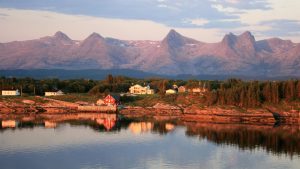
The Romantic House on Herøy
Det Romantiske Huset (“the Romantic House”) offers charming accommodation in tranquil surroundings by the sea, on Herøy on the Helgeland coast. The panorama is magnificent, spanning from the Seven Sisters mountains in the south to the peak called Dønnamannen in the north. Holiday adventures available here include kayaking, RIB sea rafting excursions, fishing, hiking, cycling and island hopping.
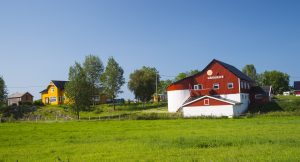
3 Kalver – Hearty dining at a farm restaurant
The farm restaurant called 3 Kalver (Three Calves), situated on the island of Dønna, offers satisfying dining in distinctive surroundings. The menu proudly features dishes based on quality local ingredients.
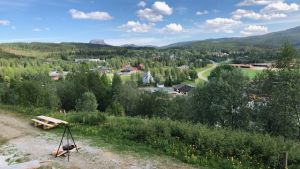
Hattfjelldal Hotell – GoExtreme
This hotel, located just outside the village centre, enjoys a fantastic view of Hattfjelldal, a picturesque community in the mountains of Helgeland.
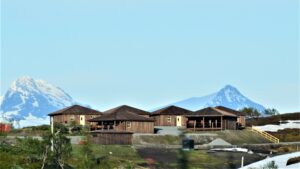
Korgfjellet Fjellstue Lodge
At the top of Korgfjellet pass, midway between the towns of Mo i Rana and Mosjøen, is Korgfjellet Fjellstue, a lodge that offers hearty meals. Tired travellers will be pleased to find good options for an overnight stay.
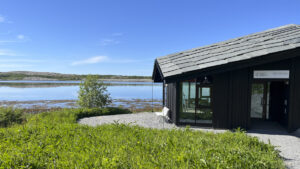
Ristning-Tjaalege, Vevelstad museum and bygdetun
Not far from the Forvik ferry terminal lies the new museum building Ristning–Tjaalege and the local heritage site, side by side with Vevelstad Church. Around the museum, you can find intriguing ancient monuments such as rock art (petroglyphs) and burial mounds from the Iron Age.
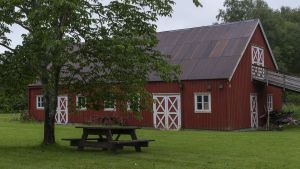
Sømna Bygdetun – An open-air museum
Sømna Bygdetun highlights how the lives of fishermen-farmers and their families changed in the course of the years 1800–1950.
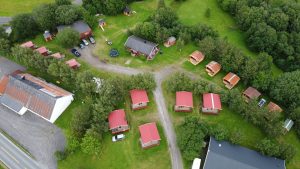
Skogmo Family Camping
Skogmo Family Camping is idyllic situated in tranquil surroundings 12 km south of Brønnøysund. It offers a relaxed family-friendly atmosphere well away from the city, where children can play freely and safely.
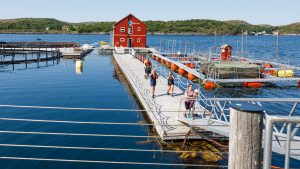
Norwegian Aquaculture Centre – A salmon success story
The Norwegian Aquaculture Centre is beautifully situated by Toftsundet. The actual fish farm is reached by a gangway from the shore. This is the place to learn more about the fascinating life cycle of salmon, and the pioneering work that made Norwegian aquaculture such an international success.

KRED Pub & Café in Brønnøysund
This is the most popular venue for local musicians as well as established artists. The pub has a big-city feel to it, and when you’re hungry, the chef offers tasty dishes. KRED is also popular as a stand-up stage, the place to watch the football game, and for its Quiz Evenings.
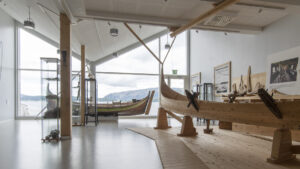
Bindal Museum and the old croft at Vassås
Bindal Museum at Terråk documents local forestry, boatbuilding and other wood-working traditions. It contrasts past and present practices. The museum also includes Bindal Bygdetun, an open-air museum at an authentic old croft at Vassås, 2.5 km north of Terråk.
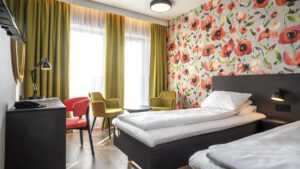
Thon Hotel Brønnøysund
Thon Hotel Brønnøysund is situated in the heart of this coastal town in southern Helgeland. The hotel offers attractive new rooms, a restaurant with à la carte dining, and plenty of free parking for guests.
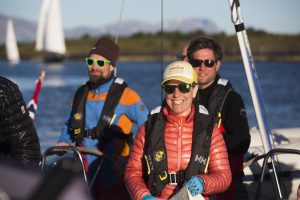
Seil Norge – Sailing adventures on the Helgeland coast
SeilNorge is the country’s leading organizer of sailing tours, expeditions, and sailing courses. Join them for an active holiday week up and down along Norway’s most beautiful coastline; the Helgeland coast. Set against a backdrop of thousands of islands, islets, and skerries, you will learn the art of sailing, whether you are a beginner or experienced sailor.
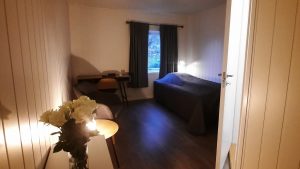
Brønnøysund Overnatting – Accommodation in the heart of town
Did you know there is cosy accommodation available within walking distance of the airport as well as the heart of Brønnøysund? It’s ideally situated with its proximity to good outdoor recreation areas, as well as the many excellent cafés and restaurants in this coastal town.
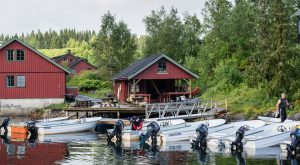
Velfjordferie – A holiday stay for guests who love fishing!
Velfjordferie is beautifully situated by the fjord, with great fishing spots and hiking trails nearby! The area lies just south of the Arctic Circle, which means you have daylight virtually round-the-clock, from mid-May to the end of July. Fishing is especially popular at “night”, when the wind dies down and the sea often is calm as a mirror.
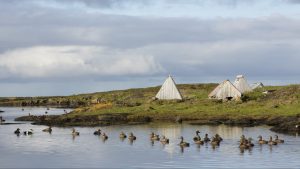
Eider ducks, luxurious down and the bird guardians of Lånan
The largest eider duck nesting site on the Helgeland coast is situated in the Vega World Heritage area. You can join us on a visit to the island of Lånan, where the nesting eider ducks and their bird guardians have a trusting and mutually beneficial relationship.

Svang Restaurant & Wine Bar – In the heart of Brønnøysund
A cozy place with a focus on local food, suitable for both big and small occasions. At Svang, the hosts warmly welcome you to stop by for a delicious meal, some snacks, or something delightful to drink
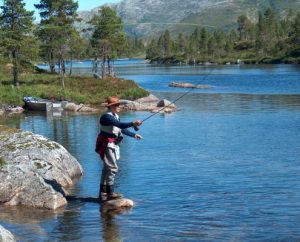
Plahtes Eiendommer – Fishing, hunting and wilderness adventures
Welcome to fishing, hunting and wilderness adventures on one of the largest private estates in Norway. Plahtes Eiendommer covers 650 km2 of magnificent wilderness in southern Helgeland. Plahtes takes great pride in its environmentally conscious management of its wilderness, as well as the cabins, boats and other facilities that ensure our guests a truly memorable wilderness adventure.
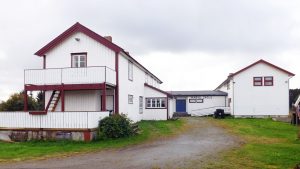
Halibudskole Vandve – A holiday home with boat rental and a nearby glasblowers workshop
Halibutskole Vandve offers a holiday stay where you’ll have some really great fishing opportunities. Guests who appreciate the arts and creative crafts will be pleased to know that a glassblower has a workshop nearby.
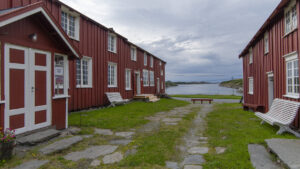
Nordvika Old Trading Post, on Dønna
The old trading post at Nordvika is one of the oldest and most intact in all of Nordland County. The museum is beautifully situated between towering mountains on the island of Dønna, just a ferry ride from its nearest town, Sandnessjøen.
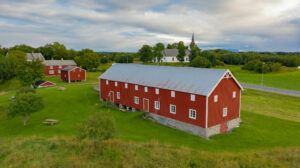
Herøy Bygdesamling – A rural museum
This rural museum, situated on the beautiful island of Herøy in Helgeland, documents the local culture and history. The museum consists of a compete farmstead, altogether seven buildings dating from the period 1745–1890, all of which are protected or listed as worthy of preservation.
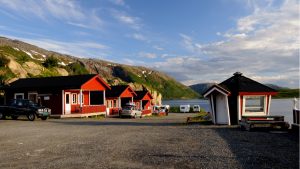
Kvitneset Camping – Rorbu cabins and boat rentals in scenic surroundings
Kvitneset Camping in Leirfjord municipality offers accommodation in scenic surroundings by a secluded fjord. Guests enjoy a beautiful view of the fjord and the Seven Sisters mountains.
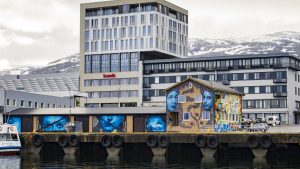
Hotel Scandic Seven Sisters – Accomodation Sandnessjøen
As a guest, you will immediately realize why the Hotel Scandic Syv Søstre bears the name of the Seven Sisters mountains. The hotel enjoys a great view of these renowned mountains. A holiday base here is perfect for exploring the many island treasures of the Helgeland coast, including Dønna and its colourful history, the idyllic island of Herøy, and the Vega archipelago, which is a UNESCO World Heritage Site.

Galleri Stokland in Mosjøen
In a charming wooden house from 1852, on Sjøgata street in the historic heart of Mosjøen, you will find Galleri Stokland. On display are colourful artworks, knitwear, glass and ceramics by creative local craftsmen and artists.
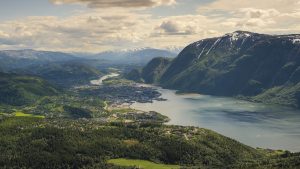
HTS Mosjøen – charter tours throughout Nordland
HTS Mosjøen offers charter tours in comfortable buses with experienced drivers. With a base in the town of Mosjøen, HTS offers tailored scenic tours throughout Nordland County.

Restaurant Soprano – Wining and dining in Sandnessjøen
Restaurant Soprano offers a taste of Italy in rustic surroundings. During the summer, you can dine at an outdoor table, surrounded by trees, cobblestones and people strolling along the pleasant pedestrian street on which the cosy restaurant is situated.
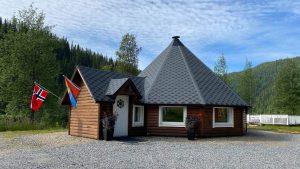
Storli Camping and Aernie – Accommodation and a sámi experience
At Aernie, you can indulge in culinary and cultural experiences based on the history and traditions of the Southern Sami people. You can stay overnight in a luxury Sami hut or in a cabin, motorhome, caravan, or tent. Storli Camping and Aernie are located along the E6, a 20-minute drive north of Mo i Rana.
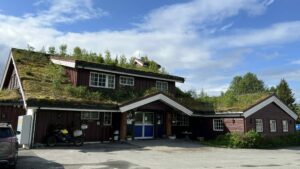
Bimbo Veikro – Food and accommodation
Bimbo Veikro offers hearty homemade fare and reasonable accommodation near the town of Mo i Rana.

Strawberry Home Hotel Helma
The Strawberry Home Hotel Helma is centrally situated in the town Mo i Rana. The hotel offers accommodation designed to make you feel right at home. Its location is conveniently near the shops, the theatre, the science centre Vitensenter Nordland, and the town’s attractive Fjord Promenade. Breakfast, afternoon coffee and a hot supper are always included in the price.

Mo Gjestegård – guesthouse
Mo Gjestegård offers cosy accommodation that make you feel right at home in the town centre of Mo i Rana. Within walking distance are restaurants, shops and attractions such as the science museum Vitensenter Nordland, the harbour with its Merman statue, and cultural arenas such as Nordland Theatre and Park 22.

Scandic Meyergården Hotel – Dine and stay in Mo i Rana
Scandic Meyergården Hotel is situated in Mo i Rana’s town centre. Its restaurant features a menu based on locally sourced ingredients. Whether you are with your family, friends or colleagues, this hotel is an ideal place to stay. It’s close to premier hiking destinations such as Rabothytta cabin and Saltfjellet national park.

Mosjøen Hotell
Mosjøen Hotel is a cosy little hotel conveniently situated along highway E6, just 1.5 km from the Mosjøen town centre. Being within easy reach of many sights and attractions, it is an excellent base for day excursions along the coast and into the inland wilderness.

Gilles Cafe & Restaurant in Mosjøen
This cozy cultural café in Mosjøen is located at the “beginning” of Sjøgata and offers good food, coffee, and both small and large concerts throughout the year.
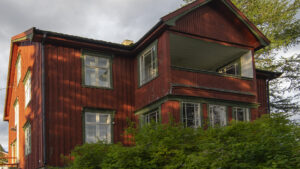
Hattfjelldal Museum
In Hattfjelldal it is Fjellfolkets Hus (House of the mountain people) which is the museums home base. Here you’ll find great exhibitions and disseminations services about the place. In the house there is also a Tourist Information Office, a café, accommodation and place for meetings and events.

Blomsterbua Food & Wine in Mosjøen
On Sjøgata, the historic street in the heart of Mosjøen, you will find Blomsterbua Food & Wine. This cosy and beautifully decorated restaurant is suitable for every occasion.
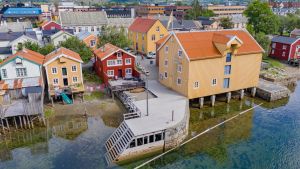
Jacobsenbrygga and the folk museum in Mosjøen
The Vefsn Museum has numerous exhibitions at several locations in and around the town of Mosjøen. These focus on everything from rural life and urban history, to weapons smuggling and the work of the Norwegian resistance during Nazi Germany’s World War II occupation. You can also join a guided tour of the historical street Sjøgata, which is lined with 19th-century houses.
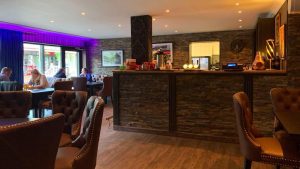
Restauranthuset Tipperary
Tipperary actually consists of three different establishments in a restaurant house that stands on a pleasant pedestrian street in the heart of Mosjøen.
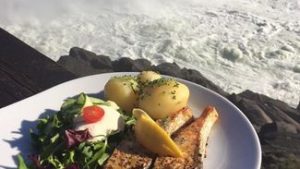
Laksforsen – Generations of tratidional food
Laksforsen is situated in Grane by highway E6, with a breathtaking panoramic view of a beautiful waterfall.
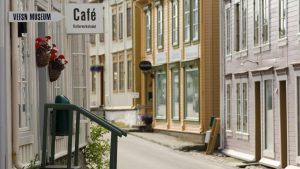
Kulturverkstedet Mosjøen – A cultural workshop
The cultural workshop in the old town, Sjøgata in Mosjøen, is a unique environment where past and present blend together.
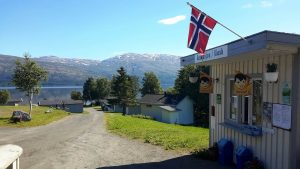
Aspnes Camping
Welcome to Helgeland and Aspnes Camping, beautifully situated by Fustvatnet lake, approximately 13 km north of Mosjøen.
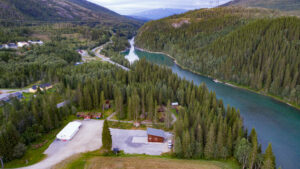
Grane Museum
Laksforsen nature and cultural gallery tells the history of the Salmon River Vefsna, specifically its use and recreation close to one of Norway’s most fantastic waterfalls. You’ll find the gallery in the lower floor of Laksforsen café, approximately 30 km south of Mosjøen and approximately 8 km north of Trofors in Grane.
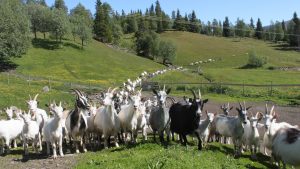
Sæterstad Gård
Are you looking for a unique experience? An experience where nature and culture meet and leaves an impression in all your senses? Then you should take a trip to Sæterstad Gård, beautifully situated 400 meters above sea level at the foot of Krutfjellet in Hattfjelldal, an area that has been populated by Sami, Swedes and Norwegians for many centuries.
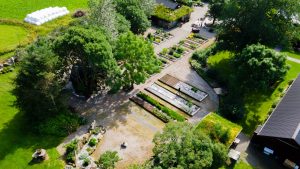
Hildurs Urterarium – Culinary adventures
Hildurs Urterarium is far more than a restaurant. It is a lush oasis imbued with life and personality, offering guests a respite from their busy lives and a unique dining experience shared with friends or family. Restaurant Sagastuen and the old parlour have an ambience that gives visitors a taste of bygone times.
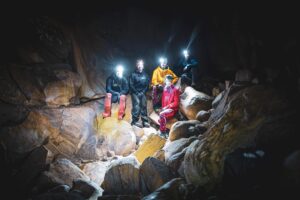
Øyfjellgrotta – A cave adventure near Mosjøen
Øyfjellgrotta is a 500 meter long limestone cave in a mountain that towers over the scenic town of Mosjøen. The experienced guides of Hi North invite you to book an unforgettable tour of the cave.
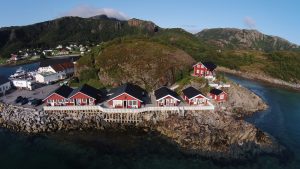
Oscarbrygga – Accommodation and dining
OscarBrygga at Tonnes offers accommodation in rorbu cabins or wharf rooms, right on the shore. From your balcony, you can enjoy the sunset or the glow of the midnight sun, to the soothing sound of the surf. Dining is offered in a refurbished old wharf building rich in ambience.

To Elise from Marius – From farm to table
In the village of Utskarpen, between Mo i Rana and Nesna, Elise and Marius established a culinary attraction that is drawing a steady stream of foodies. They offer a dining experience where every dish is made from ingredients fresh from the farm and pasture. They also offer accommodation – charming rooms in a countryside setting.
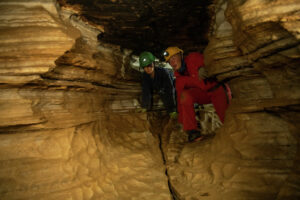
Setergrotta – An adventure inside the mountain!
In Setergrotta you can experience the mountain from the inside! A visit to this cave, situated near the town of Mo i Rana, is suitable for the entire family, and individuals as well as groups. Guided tours are given several times a day, every day throughout the summer.
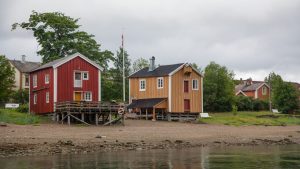
Guest Houses in the historic area in Mosjøen
Visitors are welcome to stay in one of the historic houses on Sjøgata street. The apartments offered are furnished in the old style but fully-equipped. Renting accommodation here will give you a good feel for a time that was less hurried – while enjoying all the comforts and amenities we have come to expect today.
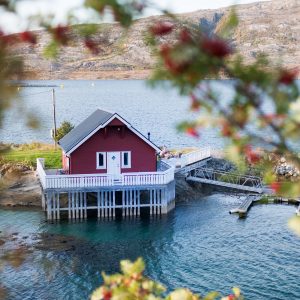
Elfis Sjøstuer – An idyllic stay in rorbu cabins
Elfis Sjøstuer is beautifully situated by a small cove on the northern part of the island of Herøy. This is the place to come for a tranquil holiday in scenic surroundings. Guests enjoy a fine view that spans from the Seven Sisters mountains to the south and the peak called Dønnamannen to the north. Activities available include kayaking, fishing, hiking, cycling and island hopping.
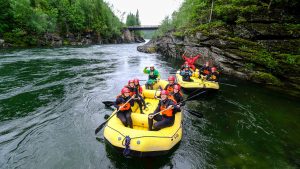
An exciting family rafting trip with RiverNorth
Join the fun activities, on the river and on shore, with RiverNorth at Trofors!
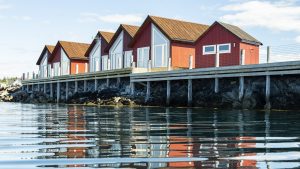
Norwegian Aquaculture Centre – Rorbu cabins by the sea
If you’re heading to the beautiful Helgeland coast, you’ll find yourself in the heart of one of Norway’s most important industries. Along the shoreline of Toftsundet, you’ll find the Norwegian Aquaculture Centre — right in the middle of salmon country. Here, you can experience the life of the salmon up close. The demonstration facility is easily accessible from land, located right next to the seaside cabins, an indoor historical exhibition, and the on-site restaurant. It’s a great place to stay by the sea, create lasting holiday memories, and enjoy the fresh sea air.
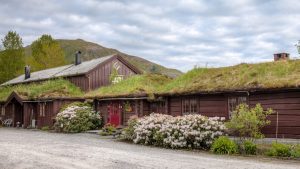
Hildurs Urterarium – Accommodation
Stay in newly renovated and cozy rooms at Hildurs Urterarium outside Brønnøysund. Here you are met by pleasant hosts in homely and good surroundings.
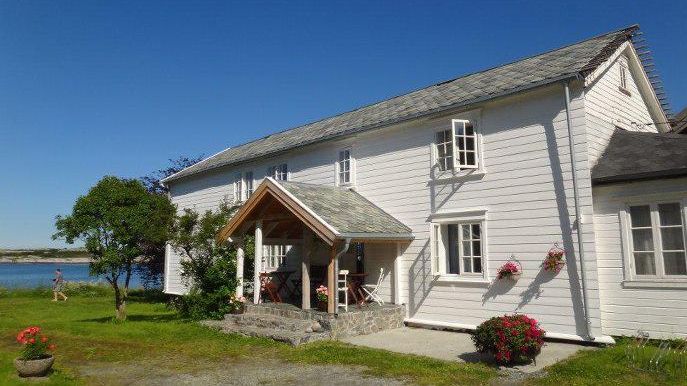
Forvik Old Trading Post
The old trading post at Forvik in Vevelstad, which dates back to 1792, is beautifully situated on the sea along route Fv17. Accommodation in charming surroundings is offered in the oldest building, Grålåna. There is a restaurant in Naustloftet, and a coffee roastery in the old general store. People often gather in Brygga, the wharf building, to enjoy the long bright summer evenings.
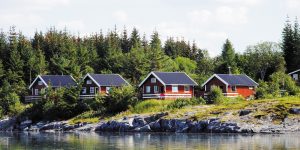
Offersøy Camping Helgeland – Camping, boat and bike rental
With Offersøy Camping as your holiday base, you can easily explore the islands of your choice along the Helgeland coast. You can island hop by kayak, or by bringing your bicycle on the express boat or ferry so you can explore various islands on two wheels. Either way, it’s a delightful way to immerse yourself in the region’s rich cultural heritage and feel close to the magnificent landscape and natural elements.
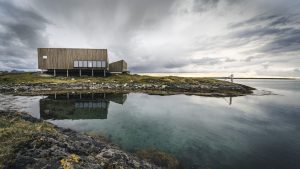
Vega World Heritage Center
The Vega World Heritage Centre, which is beautifully located at Gardsøy, documents the history and culture of the Vega islanders. Here you can gain fascinating insights into the lives of these fishermen-farmers, and about their centuries-old local tradition of protecting the eider ducks who come to nest here – a tradition that led to Vega being granted UNESCO’s World Heritage status.
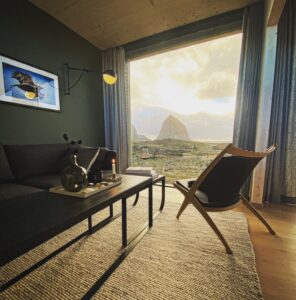
House by the Sea – A unique place to stay on the island of Træna
The House by the Sea is a unique experience, thanks to its scenic location, incredible view and innovative architecture. The three cabins are designed to make your scenic experience an integral part of your holiday accommodation.
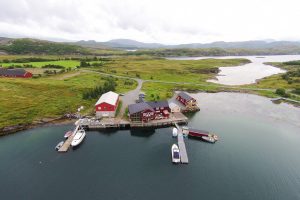
Dønna Rorbuer Bøteriet – A charming restaurant and accommodation
Dønna Rorbuer Bøteriet, situated on the quay in beautiful surroundings on the island of Dønna, offers good dining in charming surroundings, accommodation and guided boat trips.
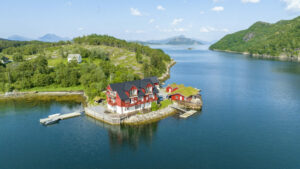
Brygga on Dønna
“Brygga” is nicely located in quiet surroundings on the north-eastern side of Dønna, 7 km from the ferry terminal at Bjørn. The wharf consists of 5 apartments of 60 square meters each located right next to the sea. They also offera a conference room, boathouse, grill, hot tub and a cabin (Rorbu).
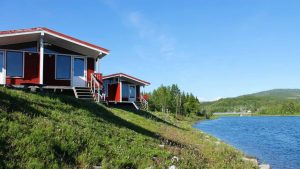
Røssvoll Camping
Røssvoll Camping offers peaceful surroundings by the Ranelva river, about 13 km north of the town of Mo i Rana. The campsite is a short distance away from attractions such as the Svartisen glacier, Grønligrotta cave, and Setergrotta cave. If you head into town, the entire family can enjoy a visit to Vitensenter Nordland, a science museum that explores nature, technology, and mathematics.
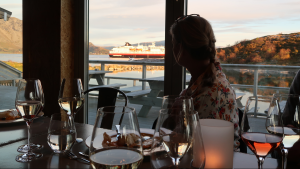
Torghatten Strandrestaurant – A dining close to the ingredients
Torghatten Strandrestaurant is magnificently situated at the foot of the legendary mountain Torghatten, 15 km from the Brønnøysund town centre. Time and again travellers are delighted to discover this beautiful seaside restaurant and its terrific fjord view.
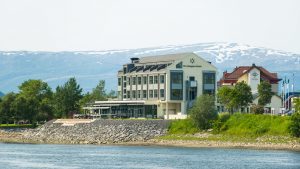
Fru Haugans Hotel in Mosjøen
The venerable Fru Haugans Hotel, part of the “Heimr Collection” chain, is located at the end of Sjøgata, the historic and preserved district in the center of Mosjøen.

Herøy Brygge – Accommodation in Herøy`s island kingdom
At Herøy Brygge, you can stay in beautiful, newly renovated rooms by the sea, in your own boat at the guest dock, or stop by for a pleasant dinner by the pier. With good food, comfortable beds, and excellent hospitality, you’ll have a wonderful time in this beautiful archipelago.

Myken bed and soup
Myken is a small fishing community far from the mainland. The islands of this archipelago have no car traffic – in fact the main island has less than one kilometre of road. Myken invites you to experience its island scenery, the ever-changing sea, and the midnight sun.

Dønnes Gård – Accommodation in historical surroundings
Dønnes Gård on the island of Dønna, offers a holiday stay in a former vicarage. The historical surroundings actually date back to the 13th century. Guests here can dine on traditional dishes made from locally-sourced ingredients. To hear the colourful history, take a guided tour of the vicarage and the neighbouring medieval church.
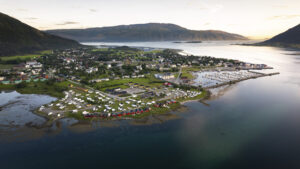
Topcamp Havblikk – Good food and lodging at Nesna
When you stay at Topcamp Havblikk at Nesna, you have access to varied activities that you can enjoy with family or friends. This campsite is well-suited to people travelling with caravans, campers or tents. If you prefer, you can choose a cabin or room.
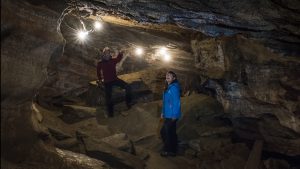
Grønligrotta Cave near Mo i Rana
Grønligrotta, with its network of passages and beautiful limestone formations, has long been one of the most visited caves in Scandinavia. Electric lighting allows you to more fully appreciate it this natural wonder, which ice and water took 700,000 years to sculpt.
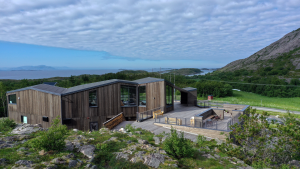
Torgarhaugen Gjestegård (Guesthouse)
Torgarhaugen Gjestegård is beautifully situated at the foot of Torghatten, the legendary mountain with a hole through it. It offers rooms that are comfortable, bright and cheerful, letting in sunlight from every directions. Here you can relax and just enjoy, taking time to enjoy the tranquillity, the sight and sounds of your natural surrounding, a good cup of coffee and home-baked cake.
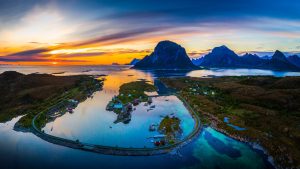
Støtt in Meløy – Top of Helgeland
The picturesque old trading post of Støtt offers some of Helgeland’s most beautiful and unique holiday experiences. Many adventures await you here, and you can enjoy charming quarters and great dining in historic buildings steeped in the island’s ancient coastal heritage.
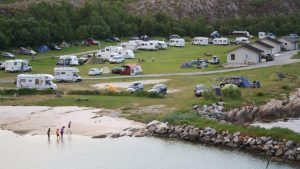
Torghatten Camping – Fishing, dining and much more
Torghatten Camping is idyllically situated at the foot of the legendary mountain Torghatten. Accommodation offered here includes high-standard cabins and apartments. There are spots to pitch your tent and electrical hook-ups for your caravan or camper. The restaurant here is known for excellent dining.
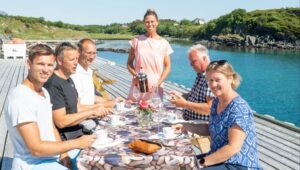
Sjokoladebrygga on Dønna
Visit “the world’s smallest chocolate factory” by the sea on Dønna and experience how delicious chocolate can be when made with care and attention to exclusive, organic ingredients.
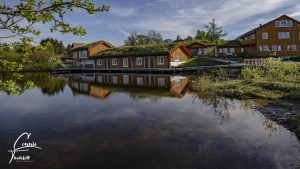
Vega Havhotell
Vega havhotell is a small hotel in beautiful surroundings with the ocean close by. Vega Havhotell is located at the north-west part of Vega, at Viksaas between forests, mountains and seas.

Mosjøen Via Ferrata
At the heart of Nordland County, in the geographic middle of Norway, is the friendly town of Mosjøen. Here you can join Hi North on an exhilarating mountain adventure on the world’s northernmost via ferrata. Take the challenge and feel the satisfaction as you reach the summit!
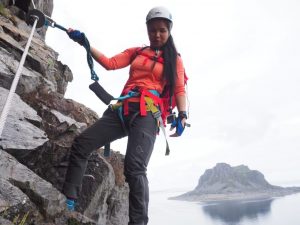
The Ravnfloget Vega Via Ferrata and the Vega Stairs
“Climbing Ravnfloget has been a dream for many people. This rugged mountain was once a lofty playground accessible only to sea eagles and ravens, hence the name.” Today, the Ravnfloget Via Ferrata, a spectacular climbing trail, will take you to the summit of Ravnfloget. The mountain is situated on the western side of the island of Vega.
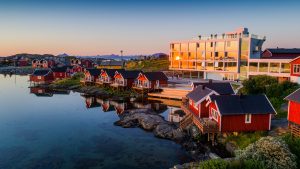
Lovund Hotel
Lovund Hotel is the perfect base for exploring the enchanting island of Lovund. With comfortable accommodation, delicious cuisine, and stunning views of the sea and mountains, you can relax and unwind after a day of hiking or bird-watching. Enjoy the urban island life and breathtaking views from the comfort of your room or the hotel’s terrace.
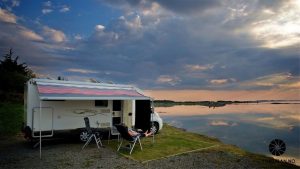
Sandnessjøen Camping
Sandnessjøen camping is located at Steiro along the Rv 17, 10 kilometers south of Sandnessjøen. Sandnessjøen Camping is just a short walk from the mountains De Syv Søstre and the local airport.
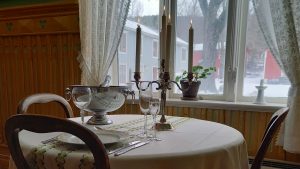
Tjøtta Gjestegaard – Accommodation and café in historical surroundings
Stay close to nature experiences in historic surroundings at Tjøtta Guesthouse, conveniently located near the Seven Sisters mountain range, cultural trails, and historical sites, with excellent ferry connections for day trips to the islands along the Helgeland coast.
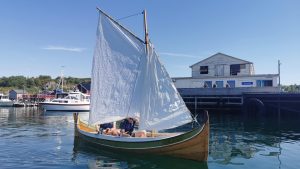
Himmelblå Brygge: Dining and accommodation at Ylvingen
To Norwegians, Himmelblå Brygge and the island of Ylvingen is well known from a popular TV programme. Fortunately, all visitors are welcome to dine and enjoy an overnight stay here. Some of the accommodation is unusual and the scenic surroundings are magnificent. And for young and old, Himmelblå Brygge offers lots of activities and great adventures!
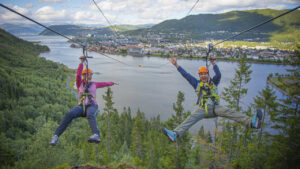
Mosjøen Zip-line
At the heart of Nordland County, in the geographic middle of Norway, is the friendly town of Mosjøen. On Storfjellet, right near Øyfjellet just outside town center, is Northern Norway’s most spectacular zip-line.

Krokstrand Fjellpark – Accommodation, food and a climbing park!
With holiday accommodation at Krokstrand, young and old can take the challenge in the “High & Low Climbing Park”, play mini-golf, hike the mountains or go fishing. Hunting in the nearby wilderness is also available. Rent a room or an entire holiday home, and dine on delicious home-cooked meals in the café.
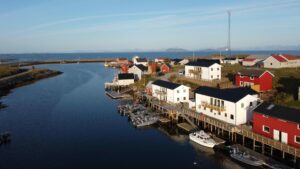
Træna Arctic Fishing
Selvær, the second-biggest island of the Træna archipelago, is a quiet and cosy fishing community. Like the rest of Træna, it faces the open sea and lies far from the mainland. Here, you can stay in a modern quayside holiday apartment, and experience scenic Helgeland at its best. You will find excellent fishing, literally thousands of islets and skerries, amazing birdlife, and skies that glow late into the summer nights.
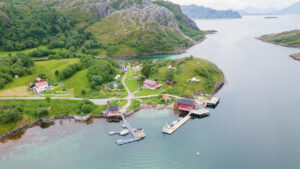
An idyllic Helgeland holiday on Rangsundøya
Just north of the Arctic Circle, in Rødøy municipality, lies Rangsundøya. At Helgelandsidyll on Rangsundøya, you stay in a glamping tent, apartment, or the “Eagle Dome.” Rent a boat, kayak, or SUP and spend your days on the water or in the mountains of the island, and relax in the evenings in the sauna. Here, you can find peace and quiet, away from the crowds.
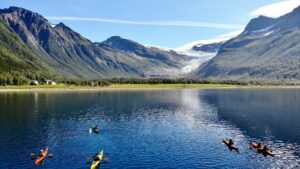
Kayaking trips in the Meløy and Rødøy area
Meløy Adventure offers guided kayaking trips on the Glomfjord, to the Svartisen glacier, and on the waters near Rødøyløva (443 m), as well as longer excursions around the island of Mesøy. The company also rents out kayaks, and its experienced instructors offer a variety of kayaking courses.
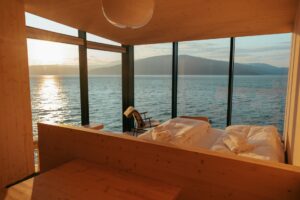
Yttervik
Yttervik, situated in idyllic surroundings by the Ranfjord, offers accommodation a short distance from Mo i Rana’s town centre. The cabins and campsite and the surrounding area is well suited for varied activities for the whole family.
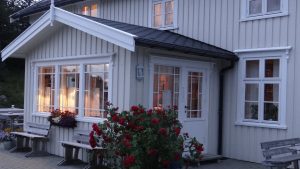
Klokkergården – Stay in nostalgic surroundings on the island of Rødøy
At the foot of the majestic mountain called Rødøyløva, is the stately Klokkergården, a sexton’s residence that dates back to 1904. Here you can enjoy warm hospitality in surroundings that recall a bygone era.
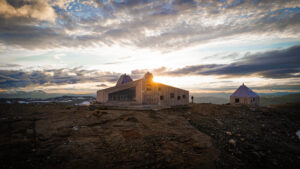
The Mountain Way
Join us for a majestic journey to Rabothytta in the Okstindan mountain range, the roof of Northern Norway. You’ll be following in the footsteps of the mountaineers and pioneers who first explored and summited these peaks and pinnacles. With local food and pastries in your backpack, you’ll be guided on a journey through vast and wild nature, to the peace and quiet found deep within the mountain wilderness. Great natural experiences meet compelling storytelling in this package tour from The Trail Way.

Skillevollen Sports Park
At Skillevollen Sports Park there’s so much to do for you who love being active outdoors, either if you’re coming by yourself or together with your family, and bring your cross-country skis, ice skates, or sleds. Here you can also find alpine slopes and a biathlon stadium.
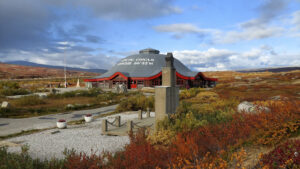
Arctic Circle Center- Souvenir shop and bistro by the Arctic Circle
With food service and a large souvenir shop, the Arctic Circle Center is a natural stopping point on your journey across Saltfjellet and the Arctic Circle.
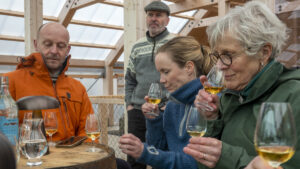
Whisky Carthedral at Myken
Join a Whisky Tasting with Storytelling on a Guided Tour through Myken’s Own Whisky Cathedral
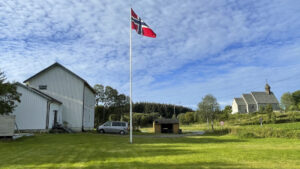
Dønnes Skolestua – Accommodation and RV parking
In 1922, the old schoolhouse was built to provide a safe and warm shelter for children who had a long way home. Now, a hundred years later, it welcomes those who wish to experience the tranquility and beautiful nature in the northern part of Dønna, right on the Helgeland coast.
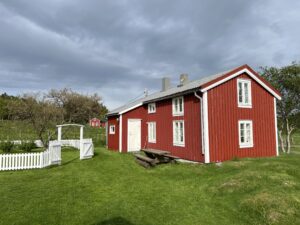
Løkta Museum
Be sure to visit Løkta Museum, beautifully located on the west side of the island. Here, you can experience what life was like on a small farm in the old days. The area is open to all and features a picnic area, a fire pit, and a small outhouse.
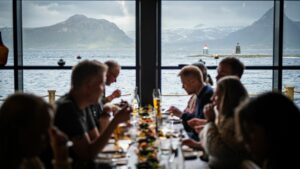
Tampen Café on Kvarøy
At the edge of the pier on Indre Kvarøy, you’ll find the bustling life at Tampen Café—a surprisingly urban lunch spot in the midst of an exciting, small coastal community.
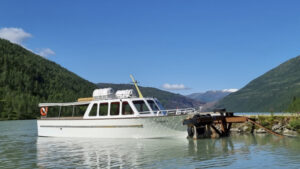
Boat to Austerdalsisen glacier – Svartisen in Rana
Looking for a unique nature experience? Austerdalsisen, Svartisen is located just north of Mo i Rana. Svartisdal takes you by boat across Svartisvatnet so you can witness this spectacular glacier.

Guided mountain tours on Dønna and the Seven Sisters
Join a guided mountain tour to three of the finest hiking destinations in Dønna and Sandnessjøen. Herøy Kayak & Bike can guide you on an easy hike to Åkvikfjellet or Markvollkulpen, or join us to the top of the spectacular mountain Dønnamannen.
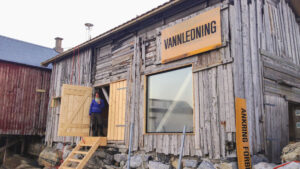
Sauna in Træna’s Old Boathouse
Get warm in the wood-fired sauna inside Træna’s oldest boathouse, then cool off with a refreshing dip in the crystal-clear sea just outside.
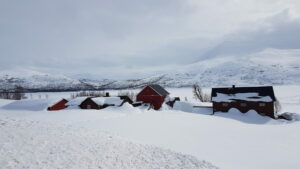
Stekvasselv Gård
Stay in the heart of the mountain wilderness with a variety of hiking opportunities, whether you want to walk on foot, climb high peaks, or go small game hunting. If you’re hiking along the Nordland Route, this is a good place to stay overnight.
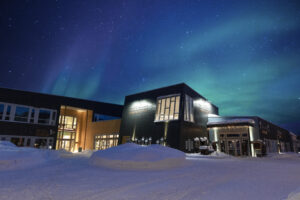
Fjellfolket Hus – in the middle of Hattfjelldal
Experience the beautiful natural areas along the Wilderness Road starting from the mountain village of Hattfjelldal. At Fjellfolkets Hus, you’ll find accommodation, tourist information, a museum, and a handicraft shop, allowing you to be close to both nature and culture in this fantastic mountainous region.
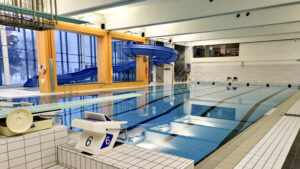
Kippermoen Pool and Sports Center
With a large exercise pool, hot therapy pool and paddling pool, diving board, and waterslide, the pool facility at Kippermoen Sports Center is excellent for your entire family. And at the rest of the sports center, you can find a squash court as well as a versatile outdoor sportspark.

Rana Climbing Center
Experience the challenges and excitement of the climbing wall at Rana Climbing Center. Whether you are a beginner who just wants to test something new, or an experienced climber on your way to new heights; here you will find routes that suit your level.
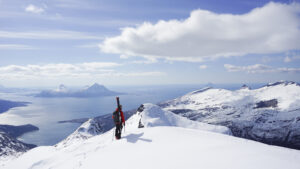
Ski touring gourmet weekend with Til Elise and MAD Mountain Guides
Join a first-class ski touring weekend with guided ski tours in the snow-covered Helgeland mountains, relaxing afternoons in the sauna, and exceptional culinary experiences.

Dog Sledding with Freke Wilderness
Meet the sled dogs and embark on a magical winter adventure for nature lovers, dog enthusiasts, and adventure seekers of all ages!
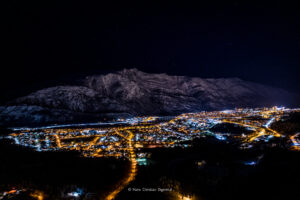
Mosjøen / Mussere 150 Years
In 2025, Mosjøen celebrates 150 years as a town, and you’re invited to the party – or FÆST, as the locals say.
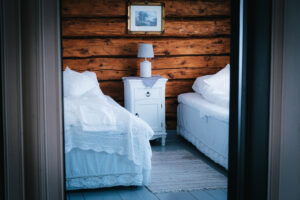
Tømmerstua – A year-round log house at Strandli Farm
Stay in an authentic log house at the foot of Børgefjell national park, overlooking the national park and the mountain landscape of Fiplingdalen.
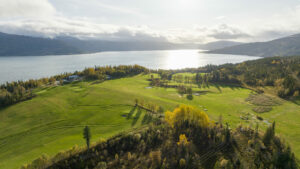
Polarsirkelen Golf – The Arctic Circle Golf
The Arctic Circle Golf course features a stunning 9-hole golf course just outside Mo i Rana, along with golf simulators for those looking to hone their skills off-season.
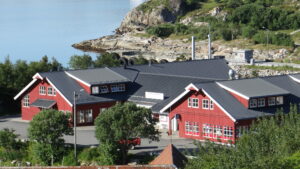
Rødøy Coastal Shop- café and 24-hour grocery store
The Rødøy Coastal Shop (Rødøy Kysthandel) you’ll find both a cozy café and a 24-hour, self-service grocery store, so you can get what you need whenever you need it.
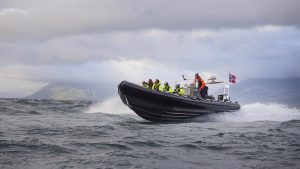
Boat adventures from Træna
Join Træna RIB and Safari for an unforgettable journey through the breathtaking islands and coastal communities of the Helgeland coast. Venture to remote fishing villages, explore the stunning archipelago, admire dramatic coastal mountains, and meet the resilient coastal people who call this region home.
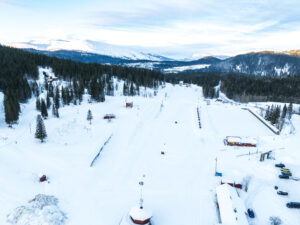
Skillevollen Sports Park
At Skillevollen Sports Park, there’s plenty to do for active individuals, whether you’re alone or with your family. Bring your cross-country skis, ice skates, or sled. There are also downhill slopes and a biathlon stadium.
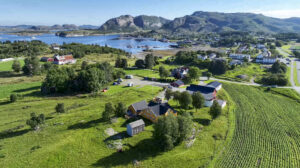
Idyllic farm retreat on Dønna
3 Kalver is located on the scenic island of Dønna along the Helgeland coast, making it an ideal spot for those seeking a peaceful place to stay and dine surrounded by idyllic, quiet farm life, with Dønna’s stunning coastal nature right at your doorstep.
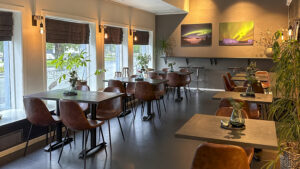
Gildevangen Konditori – Lunch, coffee, and cakes
At Gildevangen Konditori in Olderskog, Mosjøen, you can enjoy a tasty lunch, relax with a coffee or iced tea, and perhaps indulge in a slice of cake—or even three.
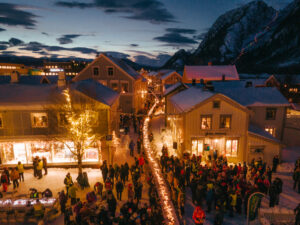
The Mosjøen Christmas village
Sjøgata is beautifully decorated for the holidays, and the christmas town Mosjøen welcomes you to enjoy the festive season throughout December with Christmas workshops, concerts, performances, and—most notably—the world’s longest Christmas porridge table, spreading holiday cheer for all ages.

Restaurant Sjyen
With delicious food, fine wine, beautiful views, and a casually elegant atmosphere, Sjyen is a great choice for a memorable meal, perfect for any day or a special celebration. Here, you’ll find fresh, modern dishes that showcase the best of the sea – or “sjyen,” as the locals say.
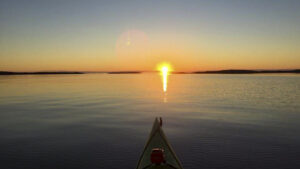
Padleheimen – Courses and guided tours in the beautiful Støttvær archipelago
Join a guided tour or kayak course in the stunning Støttvær islands. Enjoy birdwatching and the peaceful waters and striking landscapes, or challenge yourself in rougher seas along the outer edge of the islands.
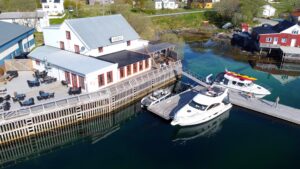
Augustbryggo – Restaurant with Local Food on Seløy
Experience the intimate waterfront restaurant with spectacular views and local ingredients.
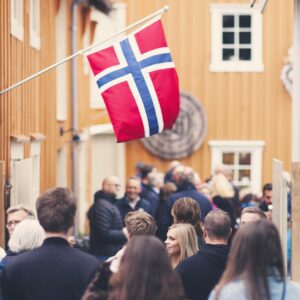
Festspillene Helgeland
Experience a week where culture and the North Norwegian summer meet through over a hundred events, thirty exhibitions, and a vibrant mix of music, art, conversations, and city life. Festspillene Helgeland is one of Northern Norway’s largest cultural festivals, attracting visitors from across the country to Mosjøen.
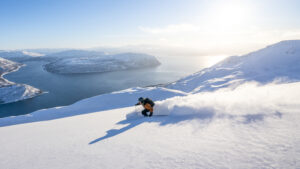
Ski & Sail along the enchanting Helgeland Coast
Join the thrill of a 6-day ski touring and sailing adventure along the enchanting Helgeland coast with Nordværs exclusive spring excursion charters. From March through May, you’ll embark on a five-night journey from Nordværs idyllic base in Seløy, setting sail aboard their state-of-the-art catamaran.
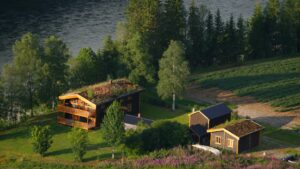
Storsletta – Scenic accommodation along the Vefsna river in Grane
With the Vefsna River as its nearest neighbor, the enchanting house at Storsletta is nestled in a picturesque area.

Light Backpack Hike from Børgefjell to Okstindan
This is one of the most stunning and thrilling hikes Northern Norway has to offer, passing through border mountains and national parks, reindeer grazing areas, open plateaus, wild valleys, and massive mountain ranges. And now, you can hike it with luggage transport from cabin to cabin.

Etcetera – botaniske utskeielser
Step into a botanical wonderland and a shopping experience of a lifetime, overflowing with flowers and décor, interior design, and creative art. And licorice, chocolate, ice cream, and coffee. This is a treat for all the senses, something you won’t soon forget and definitely won’t want to miss.
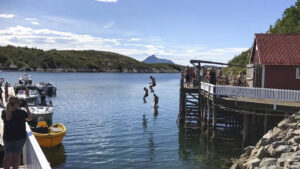
Lyngvågen Café on Gjerdøya in Rødøy
At Lyngvågen Café on the beautiful Gjerdøya in Rødøy, you can enjoy delicious, homemade seafood and opt for an overnight stay, making Lyngvågen an excellent base for exploring Gjerdøya and the other islands in Rødøy.

Træna Kaffekollektiv – Charming coffee bar in Træna
Træna Kaffekollektiv is a small and cozy coffee bar offering stunning views over Trænfjorden, serving the finest coffee in the archipelago.
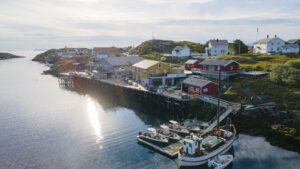
Myken Apartments
At Myken Apartments, you have several accommodation choices on this quaint island far out on the Helgeland Coast. In the apartments at Myken Brygge, you’ll stay right by the express boat quay, enjoying a splendid view of the strait and Myken’s entryway. Alternatively, you can choose one of the houses located a bit more secluded, further inland on the island.
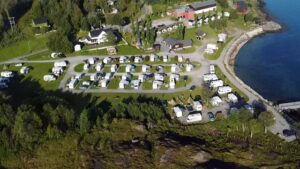
Furøy Camping by the Svartisen glacier
Furøy Camping is conveniently located near the coastal route «National Tourist Route Helgeland Coast», in the northern parts of the coast, with close proximity to the Svartisen glacier. The campsite offers cabins and spaces for motorhomes, caravans, and tents.
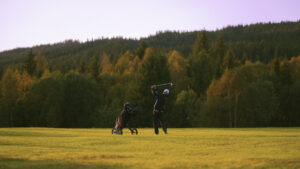
Gulljorda golf course – 9-hole golf course near Mosjøen
Play golf in picturesque surroundings at this beautiful 9-hole course, just a short drive from Mosjøen.
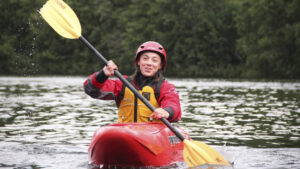
Learn whitewater kayaking with RiverNorth
Join an exciting river adventure and learn whitewater kayaking on the stunning Austervefsna river in the heart of Helgeland. Become confident in a whitewater kayak and experience the thrill and fun in wild and beautiful nature.

Topcamp Mosjøen
Located conveniently by the E6 at the entrance to Mosjøen, Topcamp Mosjøen is just steps away from some of the town’s most beautiful outdoor and activity areas. The campsite boasts a large playground, spaces tailored for motorhomes, caravans, and tents, and offers guests a choice of comfortable cabins and apartments.
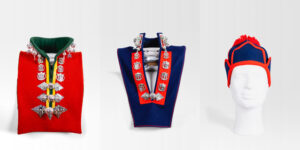
Sijti Jarnge – Center for sami language and culture
Sijti Jarnge is a Sami language and cultural center located in Hattfjelldal, where you can experience and learn about Sami culture in Helgeland.

Raus Brewery
Discover Raus Brewery in Nesna, Helgeland. Join a guided tour, go beer tasting, or simply enjoy the warm hospitality of this local brewery, where yoy can indulge in craft beverages inspired by the nature of Helgeland.
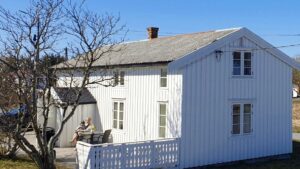
Augustbryggo – Accommodation on Seløy in Herøy
Whether you arrive at Seløy on Herøy by paddle, bike, car, or sea, Augustbryggo welcomes you.
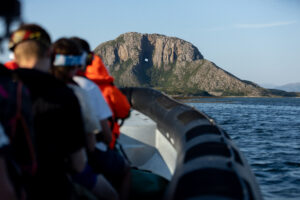
A RIB sea-rafting trip around Torghatten
Sea Adventure Helgeland offers to take you on an unforgettable RIB voyage around Torghatten, the legendary mountain with a hole through it. We will explore part of Helgeland’s magnificent coastal archipelago. The voyage is also an opportunity to see the birdlife and the coastal culture of Brønnøy up close.
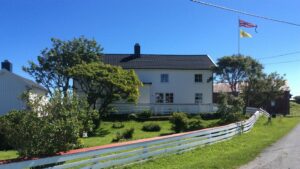
Nerstua Guesthouse- accommodation on Selvær in Træna
In the charming house Nerstua, on Selvær — at the outer edge of the Helgeland coast — you’ll find peace and a place to truly unwind. In this special island community, you can stay close to nature and the sea, and rest well between your big and small adventures.

Adventure Helgeland – dining and accommodation
Experience the Outer Archipelago of the Helgeland Coast at Havkanten in Herøy and Skogsholmen in the Vega Islands. Whether you’re travelling with family or friends, both destinations offer peaceful and scenic surroundings for your stay.
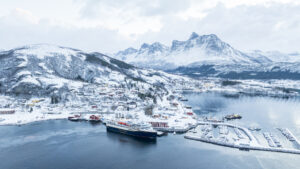
Ørnes Hotel
Ørnes Hotell offers comfortable accommodation in the heart of Helgeland’s stunning coastal landscape. With easy access to both nature and local experiences, it’s the perfect base for your journey.
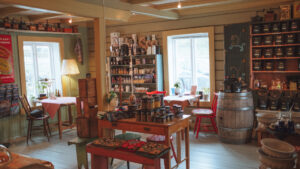
Krambua Café in the coffee roastery at Forvik Old trading post
Nestled between the sea and history, along the Coastal Route in Vevelstad, you’ll find Forvik old trading post — a living tribute to Northern Norwegian coastal culture and one of Helgeland’s most charming roadside stops. Here, you can visit the cosy café, shop, and coffee roastery in the old general store, and enjoy a moment of rich aromas and flavours in a truly historic setting.
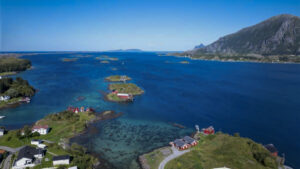
Lurøy Rorbuer
Enjoy long, bright summer days or a beautiful winter visit to Onøy and Lurøy. Experience island life, coastal culture, and scenic hiking areas. Go kayaking in the sheltered archipelago, visit neighbouring islands like Lovund, Træna, and Hestmannøy — and end the day with the evening sun by the pier or a quiet moment in the sauna.
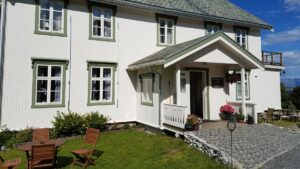
Vevelstad Gjestegård and Rorbuer
Vevelstad Gjestegård offers bed and breakfast accommodation in historic surroundings, located near the center of Vevelstad, a small municipality just north of Brønnøysund. The guesthouse serves homemade local traditional food and has a farm shop in the storehouse.
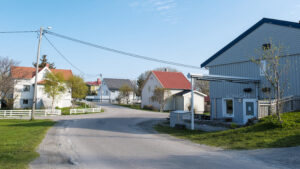
Aloha Cafe on Træna
Aloha Cafe, nestled in the heart of Høusøy in Træna, offers a delightful cafe experience with a touch of island charm. With it’s central location it’s just a short walk from the express boat and ferry terminals, the church, tourist information center, grocery store, Træna Accommodation, and House by the Sea.
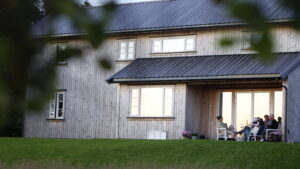
Lille Herstrand – Beachfront holiday home
Lille Herstrand is a modern holiday home just meters from the sea, located in Meløy at the northern end of the Helgeland Coast. Here, you can enjoy nature and the peaceful surroundings, perhaps from a kayak or boat?
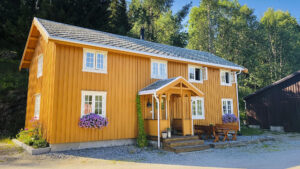
Bakarstuo – Year-round guesthouse by Trofors
Stay in an authentic log house from 1860 on the banks of the Vefsna River.
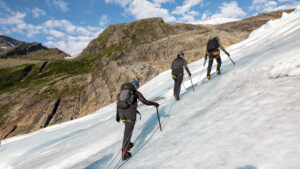
Glacier hike on Svartisen with Explore Svartisen
Join an adventurous glacier hike on the Engabreen glacier tongue in Svartisen, Meløy.
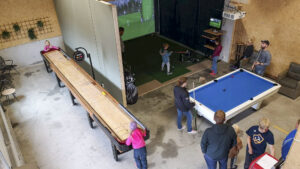
Kvarøy activity hall
Activity hall with shuffleboard, billiards, golf and hunting simulator, and much more fun for the whole family!
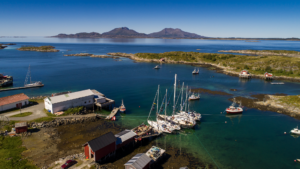
Activity vacation on Ylvingen
This is the four-day vacation you need, with accommodation, meals, and activities on the beautiful ‘Himmelblå Island’ Ylvingen.
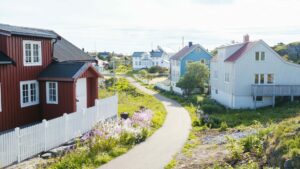
Historical walk through Myken
Hårek, who was born and raised on Myken, takes you on a walk around the small island. Here, you get a unique opportunity to look back at Myken’s history and learn about life in this small island community, far out at sea.
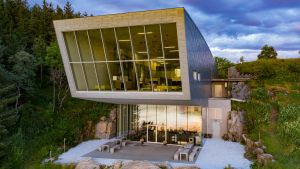
The Petter Dass Museum
At Alstahaug you will find a museum and a church that highlight centuries of the cultural and architectural history of Northern Norway. Moreover, the area is rich in cultural monuments and is a popular hiking area for both locals and tourists. The Petter Dass Museum and Alstahaug were chosen as Nordland County’s venues to celebrate the dawning of a new millennium.
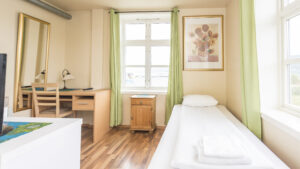
Toranes Overnatting
At Toranes Overnatting, you stay just outside Mo i Rana city center, with easy access to the city’s restaurants and cafés, parks and shops, science center, water park, cinema, and more.

Hotel Svartisen – Apartment hotel in the middle of Mo I Rana
At Hotell Svartisen, you can stay close to everything Mo i Rana has to offer, within walking distance of parks and shopping centers, restaurants and cafés, a science center, and a museum
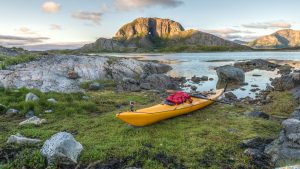
Brønnøysund Kajakk- courses and rental of kayaks, SUPs, and boats
Brønnøysund Kajakk has everything you need to explore the beautiful sea areas and islands around Brønnøysund, whether you want to do it with a kayak, SUP, or boat.

Fertility Exhibition at Fallosen on Dønna
At Glein on Dønna, you can see Northern Europe’s largest marble phallus and take a tour of the Fertility Exhibition, a collection of fertility symbols from around the world dating back 25,000 to 30,000 years.
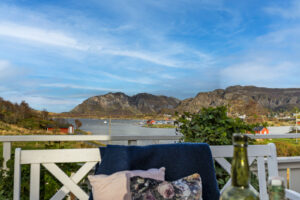
Course Stay at HeimeHosKatrine on Dønna
For groups: Accommodation, course
A 4-day course for small groups. Motivating, hands-on, and exploratory learning about a more sustainable lifestyle.

Lamesa – The taste of Asia in Helgeland
Lamesa Asian Fusion combines Asian dishes with Norwegian ingredients for a delightful culinary experience. The restaurant is located next to Kulturbadet and Scandic Syv Søstre in downtown Sandnessjøen, making it perfect for a night out with friends, a quiet evening with your partner, or a dinner with the whole family.
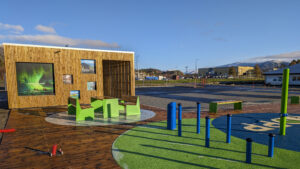
Electric car chargers from Lad Opp
At the excellent charging stations provided by Helgeland Kraft, you can recharge both your and your car’s batteries. Your car’s batteries can be charged with renewable hydropower, while you can recharge with experiences in beautiful nature.

Løyle Farm – Petting Farm with alpacas, horses, dogs, and goats
At Løyle Farm, the whole family can meet farm animals such as horses and alpacas, goats and sheep, and of course, the loyal farm dogs. In the farm’s small play park, children can play and have fun, while adults can relax and enjoy country life with a cup of coffee.
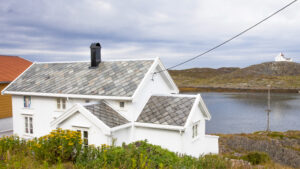
Adolfstua on Myken – A Nordland House with Character
Welcome to a stay in your own cozy holiday home, at the outer edge of the Helgeland coast, and experience life in one of our smallest island communities.
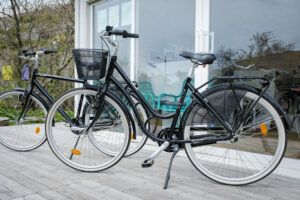
Rent a bike at Træna
At the Træna Tourist Office on Husøya, you can rent bicycles to explore the beautiful island.
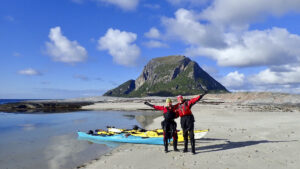
The kayakers paradise at Støtt
From Støtt, you can paddle in the beautiful and sheltered archipelago of Støttvær or indulge in the thrill of surfing waves and breakers along the open coast. Join a course, embark on a guided tour, or rent a kayak of your own.

Restaurant Gammelbutikken – authentic local seafood
Restaurant Gammelbutikken is Støtt’s grand locale and exudes authentic coastal culture. Here, you can taste the best that the island and the sea have to offer in terms of local culinary treasures. They follow the entire value chain, from harvesting ingredients in the island’s natural surroundings and catching fish in the Vestfjorden, to serving it in the restaurant.
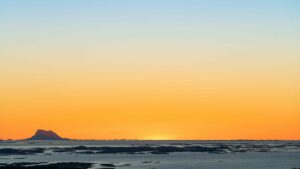
Sailing adventures with Nordvær
Nordvær on Seløy can give you a diverse range of activities and experiences with their modern sailing catamaran as your base. You can choose between kayaking, freediving, hiking, skiing, and culinary experiences while enjoying the breathtaking views of the Norwegian landscape.
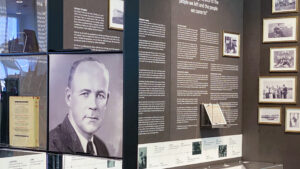
Exhibition: The Life and Work of Ole Edvart Rølvaag
Ole Edvart Rølvaag emigrated from Dønna to the USA in the late 1800s. There, he wrote several novels about emigrating from Norway and being an immigrant in the USA during that time. At the Dønna exhibition, you can learn more about the author’s life and work and see the complete collection of Ole Edvart Rølvaag’s first editions.
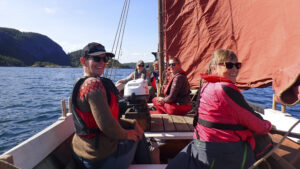
Sailing with the Nordland boat Faragut
Join the sailing trip on the beautiful Nordland boat Faragut and experience Helgeland from the sea just as people here have done since the Viking Age. The Nordland boat is an open, low, and sturdy wooden boat that has its roots all the way back to the Viking ships, and it’s an experience to stand at the helm when the wind fills the sail.

Guided kayak tour in Herøy
Join us for a guided tour of some of the finest kayaking areas in all of Helgeland.
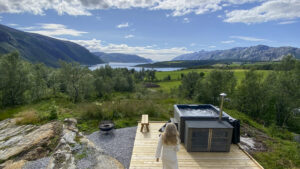
Nellehytta – Jacuzzi between mountains and fjords
Nellehytta is tailor-made for those who want to be close to nature, who want to enjoy both outdoor life and cabin life, and at the same time, want to relax in modern comfort and a touch of luxury.
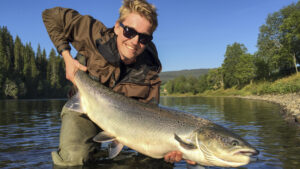
Salmon fishing at Korgen Camping
Korgen Camping is nestled idyllically right by the salmon river Røssåga. Here, you’ll find an easily accessible and well-facilitated salmon fishing area, with a dedicated zone for fly fishermen, fishing trails, and several shelters with fire pits. The river flows wide and calmly, making it ideal for fishing both from the shore and with waders.

Guided island hopping by bike to Dønna and Herøy.
Join us for a delightful guided bike tour from Sandnessjøen out to the beautiful islands of Dønna and Herøy, with stops at charming cafes and exciting shops along the way.

The Coast Coffee
At the coffee roastery The Coast Coffee at Lovund, the lively coastal culture and urban coffee culture meet at their best. Here you can enjoy an exquisite cup of coffee in what is the island’s own coffee bar and roastery, with a great atmosphere by the sea.

Terråk Gjestegård – Comfortable Accommodation and Good Food in Bindal
At Terråk Gjestegård, guests can stay in comfortable rooms and enjoy dinner at the in-house restaurant Færingen Spiseri – all within easy reach of the many experiences Terråk and Bindal offer, from the fjords to the mountains.

Local food in Sømna
The shop at Sømna Kro og Gjestegård is stocked with cheese and honey, liquorice and spices, ketchup, dressings, and much more from local food producers.
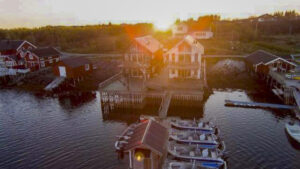
Seaside stays on Dønna
A spacious boathouse, a charming fisherman’s cabin, and a cosy cottage – all set in beautiful surroundings where the sea meets the hills in northern Dønna.
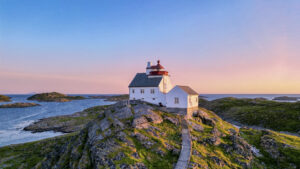
Your own island adventure at Myken Lighthouse
In 1918, a lighthouse was built on the fishing village of Myken, far out towards the open sea. It was guarded and cared for by a lighthouse keeper, his wife, their five children — and a cow. In 1975, the lighthouse was automated, and in 2018 it was beautifully renovated by Eventyrlig Oppussing (a Norwegian home renovation TV show). Today, you can stay here and experience the unique atmosphere of having your very own small island on the Helgeland coast.
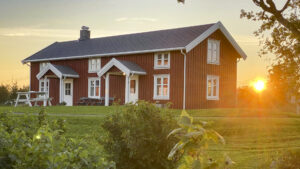
Cosy farmhouse stay at Stavseng Gård
Stavseng Gård is located in the northern part of the long, narrow island of Dønna. Here, you can rent a self-catering accommodation and experience life in the rural village of Stavseng.

Øksningsøya – Cozy cabin getaway
Stay in peaceful surroundings in a private cabin on Øksningsøya, just a short boat ride from Terråk.
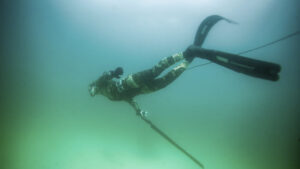
Freediving and kayaking in Træna – explore the underwater world
Dive below the surface and discover Træna’s beautiful underwater landscapes. In crystal-clear waters, among forests of kelp and sandy seabeds, you’ll encounter vibrant marine life — schools of fish weaving through the kelp, scallops and flatfish resting on the sand, and much more. Whether you want to freedive, snorkel, or paddle between the islands, you’ll find both equipment and experiences available at Kranberget on Husøy.
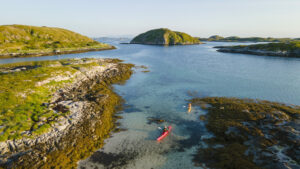
Kayak and bike rental in Herøy and Sandnessjøen
Herøy is an ideal destination for kayaking enthusiasts. Its stunning islands, skerries, and scenic shorelines provide an excellent opportunity to experience nature at its best. Herøy Kajakk & Sykkel offers a wide range of options for both land and water explorers. You can rent kayaks, e-bikes, and SUP boards to embark on your own adventure, or join a guided paddling tour led by experienced kayakers to explore the island.

Bitteliten Gård – A peaceful island farm experience
Slow down and find peace among the friendly animals at Bitteliten Farm, located on Handnesøya just off Nesna.
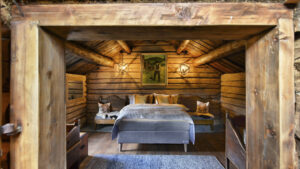
Inderdalen Gård – Charming farm stay with rich history
Nestled at the foot of Okstindan in Hemnes Municipality lies a treasure trove of a mountain farm dating back to the 1600s. At Inderdalen Gård, you can spend the night in Kjellerhuset and immerse yourself in the rich cultural history of the farm while enjoying the hospitality of its fantastic hosts in scenic surroundings.
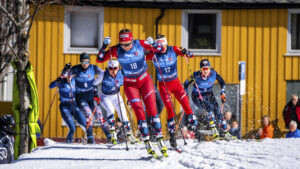
Bysprinten ski festival
Sports event in Mosjøen
April 24th to 26th
Bysprintent in Mosjøen is a festive ski race, where world-class athletes, local stars, and promising talents ski together through the center of Mosjøen. With a focus on skiing joy and good sportsmanship, accompanied by music, a great atmosphere, and packed venues, Bysprintent always provides an excellent reason to visit Mosjøen.
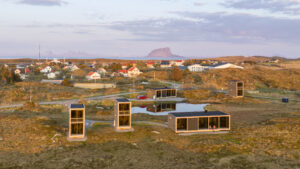
Volunteer Tourism on Træna
Now you can become a volunteer tourist on Træna and receive free accommodation at House by the Sea in exchange for participating in a clean-up campaign.
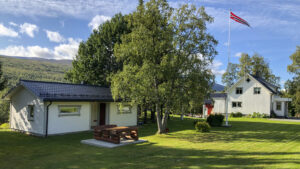
Møteplass Børgefjell
Møteplass Børgefjell is beautifully situated in Susendalen, on the doorstep of Børgefjell National Park. This is a wild and beautiful natural area with nearly endless opportunities for active outdoor life, whether you want to fish or hunt, hike in the mountains, paddle a canoe, or go skiing and ski touring.
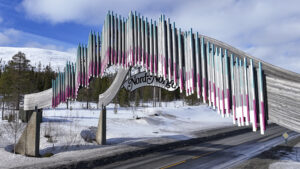
Gateway to Northern Norway – souvenir shop & fast food
Begin your journey through Helgeland with a good meal and a visit to the shop that has everything you need for the adventures awaiting you in Northern Norway.

Savory farm food from Vega
Get a true taste of Vega at Stavsmarken Gård. This small farm shop offers a mouthwatering selection of homemade cured meats and farm food, as well as a cozy summer café where you can savor all the Vega countryside has to offer.

Kulturbadet in Sandnessjøen
With a swimming pool, cinema, library, and theater all under one roof, Kulturbadet in Sandnessjøen offers activities for the whole family and then some!
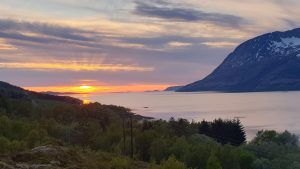
Velfjord Panorama Caravan Camp
Consider a stay at Velfjord Panorama Caravan Camp, situated right on the sea in beautiful surroundings!Here you can really feel the energy of the natural elements, and enjoy the summer sun all evening. You can go fishing, take a boat trip, hike the mountains, go bicycling or kayaking, and relax with sweet dreams in your cosy rooms.

Kråkeslottet – Unique woollen design at Hemnesberget
The apparel store Kråkeslottet in Hemnesberget is an attraction in itself. They offer handmade woollen garments of their own design that are produced right in the store. This includes beautiful wool coats, dresses, lovely items for babies and toddlers, and clothes that will keep you warm on your hikes and outdoor adventures.
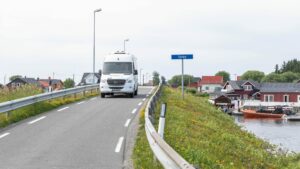
Experience all of Helgeland with Helgeland Travel Service
Helgeland Travel Service (HTS) will gladly take you on a tour to Helgeland’s many attractions. Whether we explore the coast or inland tracts, on a clear summer day or a day with mist and rain, all of our excursions will show you the magnificent landscape of Helgeland.

Stupbratt Klatreklubb – Climbing hall in Brønnøysund
Test your climbing skills, challenge yourself and each other, and reach new heights at Stupbratt Klatreklubb’s climbing hall. With over 60 routes in all difficulty levels, auto belay, a bouldering wall, and a Kilter Board, there’s something for everyone—regardless of age or experience.
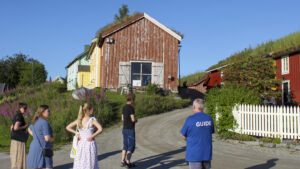
Guided city walk in Mo i Rana
Join a guided city walk and hear the story of life just below the Arctic Circle, at 66 degrees north.
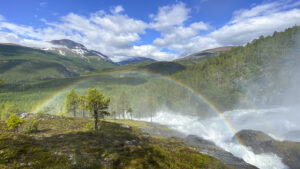
The Geopoetic Way
We call it “untouched nature.” But when you know what to look for, you’ll see that it’s full of stories and traces. Geological traces left by glaciers and ancient riverbeds. Archaeological traces and tracks from the people who came before us. On this tour from The Trail Way, you’ll learn more about these traces, how we discover them, and how we preserve them.
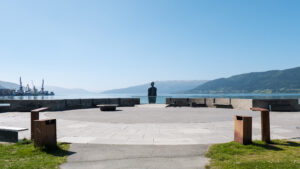
The Power Way
How do we utilize nature responsibly? How do we build a city? How do we harvest sustainably? These are important questions that you are challenged to reflect upon during this journey to and through Mo i Rana, the ironworks town set to become Norway’s green industrial capital. Experience the town, the food, the people, and the history on this package tour from The Trail Way.
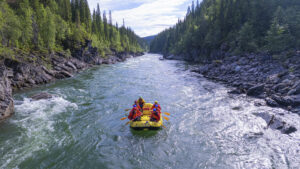
The River Way
Join us on an exciting journey through raw nature, with speed and excitement, salmon fishing, and authentic traditional food on the menu. Great natural experiences meet compelling storytelling in this package tour from The Trail Way, where you’ll experience how the river and forest once served both as way of travel and way of life.
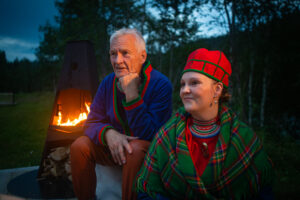
The Sami Way
At the foot of the majestic Saltfjellet, by the banks of the Ranelva river, you’ll find Storli Farm and Aernie; “the hearth”. Here, you’ll get a taste of life among the mountains under the Arctic Circle, as it was and is in Sami and local culture. This package tour from The Trail Way combines authentic food traditions with vibrant cultural storytelling.
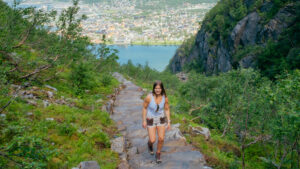
The Stair Way
Pack both your hiking and city shoes, and come along to the café city of Mosjøen. Here, you’ll experience the historic Sjøgata, the food and atmosphere at the venerable Fru Haugans Hotel, and the magnificent journey up the mountains stairs of Helgelandstrappa, the world’s longest mountain staircase and one of Helgeland’s most popular natural attractions.
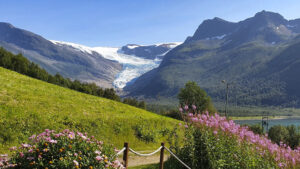
Stay with a view of the stunning Svartisen glacier
Enjoy a memorable holiday at Engen Gård, surrounded by beautiful scenery and overlooking the Engenbreen glacier in Meløy. This location is perfect for couples, families, or groups of friends looking to spend quality time together.

Incredible guided ski tours on the Helgeland Coast
Join MAD Mountain Guides for a dream ski adventure along the stunning and dramatic Helgeland coast. With unique accommodations, untouched slopes, and experienced professional guides, you’ll enjoy a custom-tailored ski vacation like no other.

Nature experiences in the beautiful Solvær archipelago
At Solværøyan Birds and Beds, you’ll find unique accommodations and rare nature experiences in one of the Helgeland coast’s finest birdwatching paradises. Sleneset is part of the Solvær Islands.
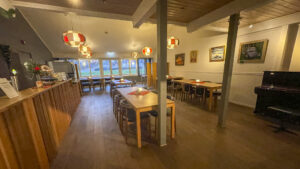
Sømna Kro og Gjestegård
A welcoming inn offering comfort and a taste of local culture in the charming village of Vik, Sømna. Here, you can enjoy a pleasant stay and great food in peaceful surroundings, close to nature and a charming cultural landscape.

ArktiskMat food festival
Food festival in Mosjøen
September 12th and 13th
ArktiskMat is an annual international food symposium held in the charming town of Mosjøen.
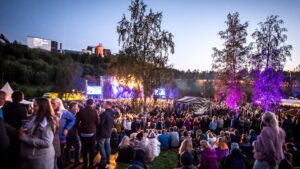
Verket
Music festival in Mo i Rana
August 29th and 30th
The Verket music festival is an annual end-of-summer event in Mo i Rana. The festival is held at Revelen, within walking distance of Mo’s town center and just a few hundred meters from Mo Industrial Park, formerly AS Norsk Jernverk—the inspiration for the festival’s name.
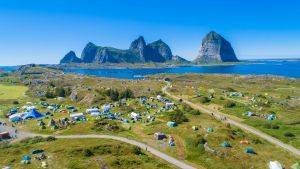
Trænafestivalen
Music festival in Træna
July 9th to 12th 2025
Trænafestivalen is a cultural experience as breathtaking and unique as the landscape it’s set in—beautiful Træna, located on the outer edge of the Helgeland coast. This is one of the most exciting opportunities to experience these remote islands at their most vibrant.
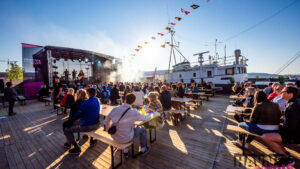
The Havna festival
Music festival in Sandnessjøen
August 8th and 9th 2025
Locally known simply as “Havna” (the Harbour), this festival takes place in Sandnessjøen during the second weekend of August each year.

Rootsfestivalen
Music festival in Brønnøysund
July 16th to 19th 2025
In the height of summer, you can enjoy four days of a vibrant mix of local musicians, emerging talents, and well-known national and international artists.
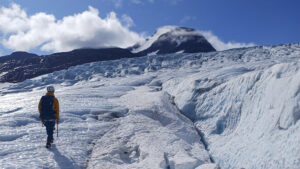
Guided hikes and courses on Okstinbreen
Experience the beautiful Okstindbreen and Oksskolten with MAD Mountain Guides and join exciting glacier tours and courses in a magnificent glacier landscape. At 1,916 meters above sea level, Oksskolten is Northern Norway’s highest mountain and an impressive sight in a wild and beautiful mountain massif.

Guided Snowmobile Safari and Northern Lights Hunt
Hi North takes you into the wilderness just outside Mosjøen to the snowmobile trails and excellent lighting conditions. Skilled guides will train you and take you on a fun and thrilling snowmobile safari in spectacular surroundings.

An evening wilderness adventure with a taste of Sámi culture
Come along for a wilderness adventure in Helgeland. With the moon and perhaps the glow of the Northern Lights illuminating our way, and equipped with headlights if needed, Hi North will guide you on a magical adventure!
